Everywhere from Houzz inspiration galleries to fast-saving Pinterest boards, the forest green house with black trim has exploded in popularity during 2025, celebrated for its ability to settle seamlessly into natural settings while still reading sharp and contemporary. Design analysts place deep greens—“Forest Green,” “Edge Olive,” even black-leaning “Greenblack”—among the year’s quickest climbing exterior requests, all thanks to their grounded psychological calm and instant curb-appeal boost. Because these hues carry low light-reflectance values, they disguise dust and sun fade, and when edged with black windows, gutters, and fascia they gain the crisp definition that sells both modern and heritage façades. The twenty ideas below unpack that winning formula from every angle so you can tailor it confidently to your own site, budget, and architectural style.
1. Trend-Driven Forest Green Facade for Instant Curb Appeal
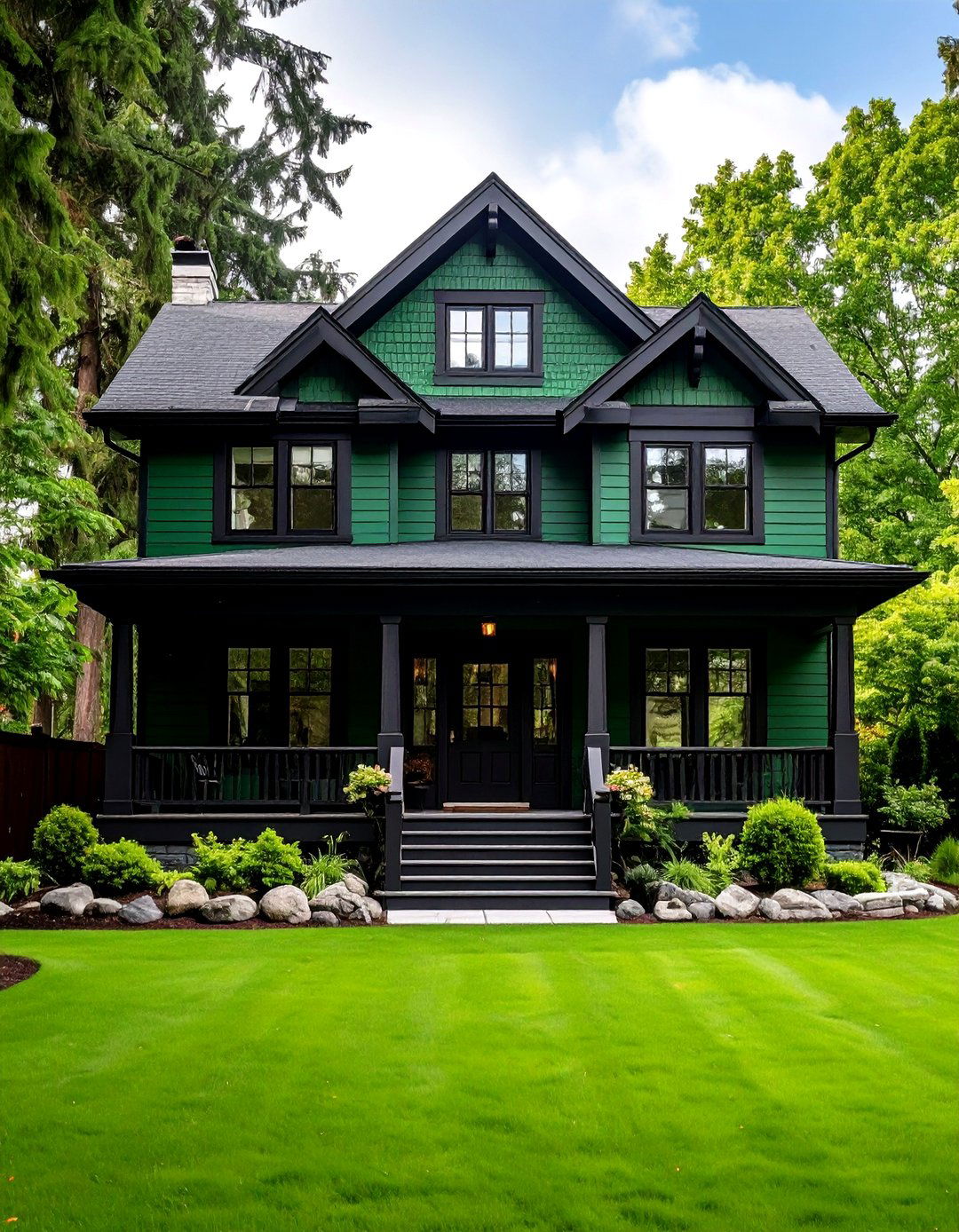
A surge of real-estate snapshots shows buyers pausing longer on listings flaunting a forest green façade outlined in black, a combo agents credit with adding “modern heritage” charisma that photographs beautifully online. Allura’s 2025 color report even tags forest green among the top exterior shades raising appraisal values, thanks to its earthy yet polished vibe. Action step: if you’re repainting to sell, pick a mid-deep green sample and test on the sunniest and shadiest walls to confirm the hue never skews too bright; once satisfied, frame it with satin-sheen black trim for photo-ready contrast.
2. Color Psychology: Calm Nature Meets Bold Outline
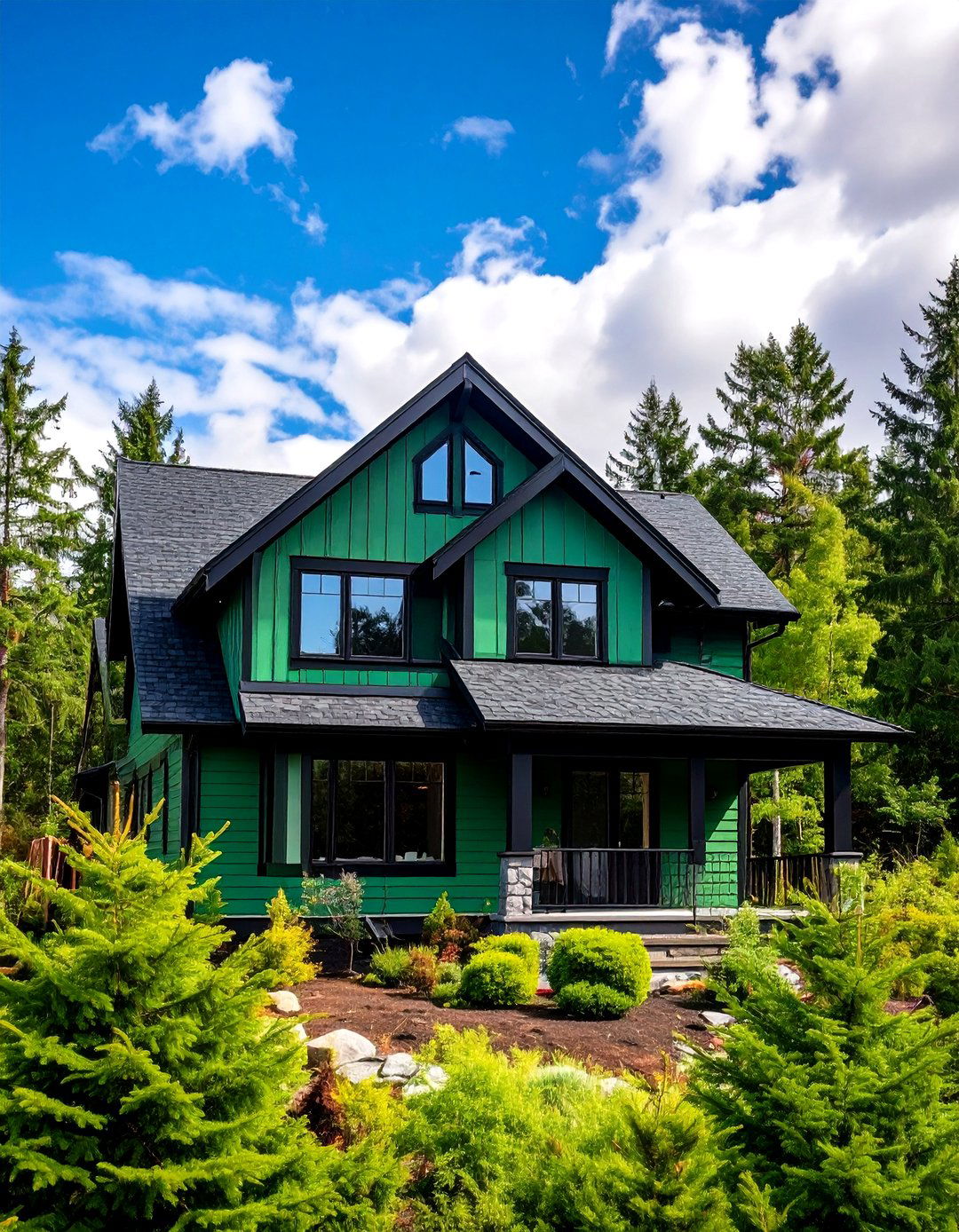
Design platforms emphasise how a forest green house naturally channels tranquillity by mirroring nearby evergreens, while the stark black outline delivers the confidence of modernist lines. For the homeowner, that means guests feel grounded on arrival yet still sense a fresh, stylish energy. Practical tip: deepen the green with 2–3 % black tint to drop its LRV below 10, creating a cocoon effect at dusk; pair with ultra-matte black soffits that visually “frame” the sky.
3. Adapting the Palette to Classic Architecture
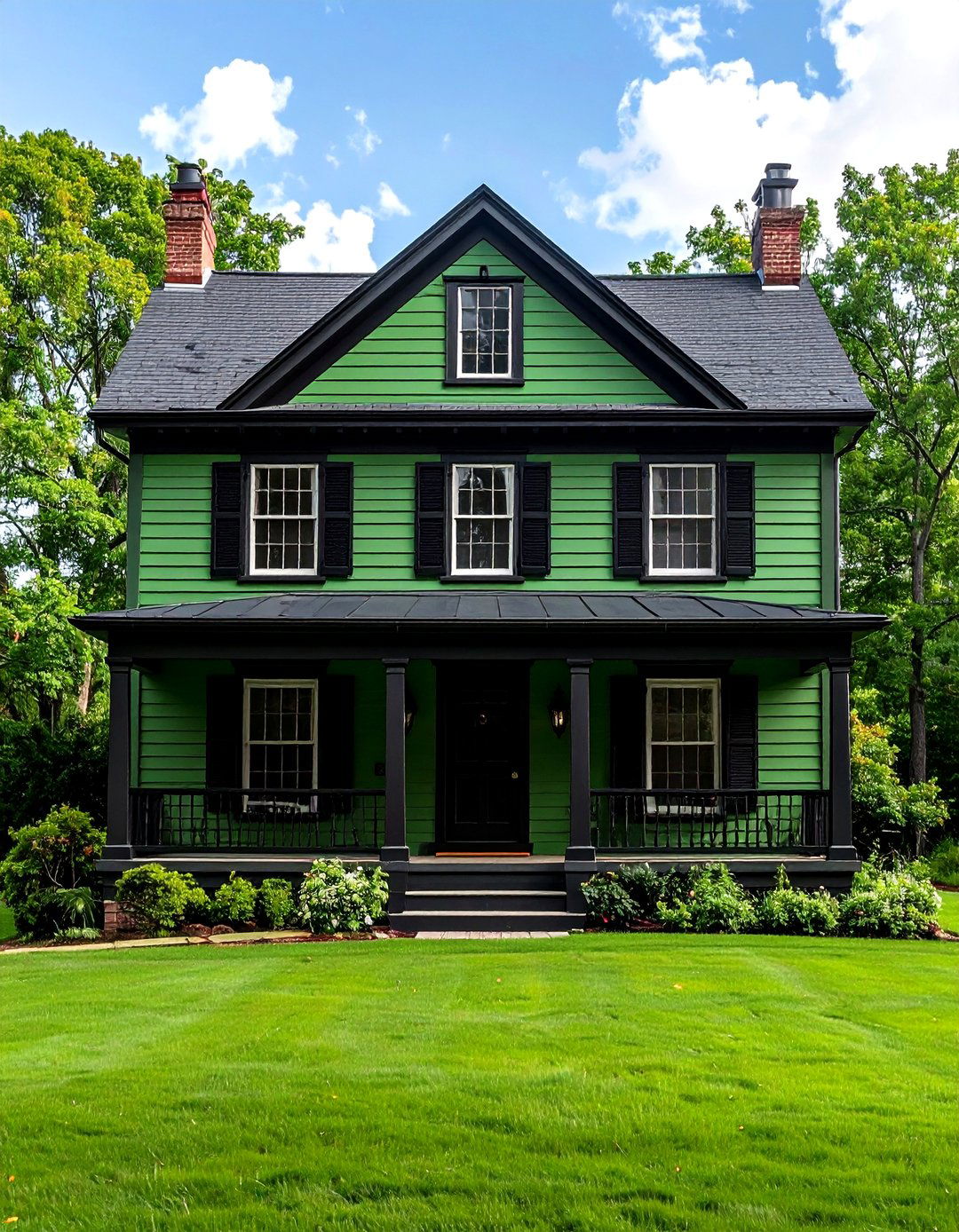
Forest green siding with black shutters honours traditional cottage or Colonial silhouettes while quietly modernising them. Keep detailing restrained—slimline muntins, a subtly flared crown moulding in black—and the house retains its period bones yet feels freshly relevant. Replace bright brass hardware with forged-iron black pieces to maintain tonal consistency and reduce maintenance polishing.
4. Modern Minimalism on Flat-Front Forms
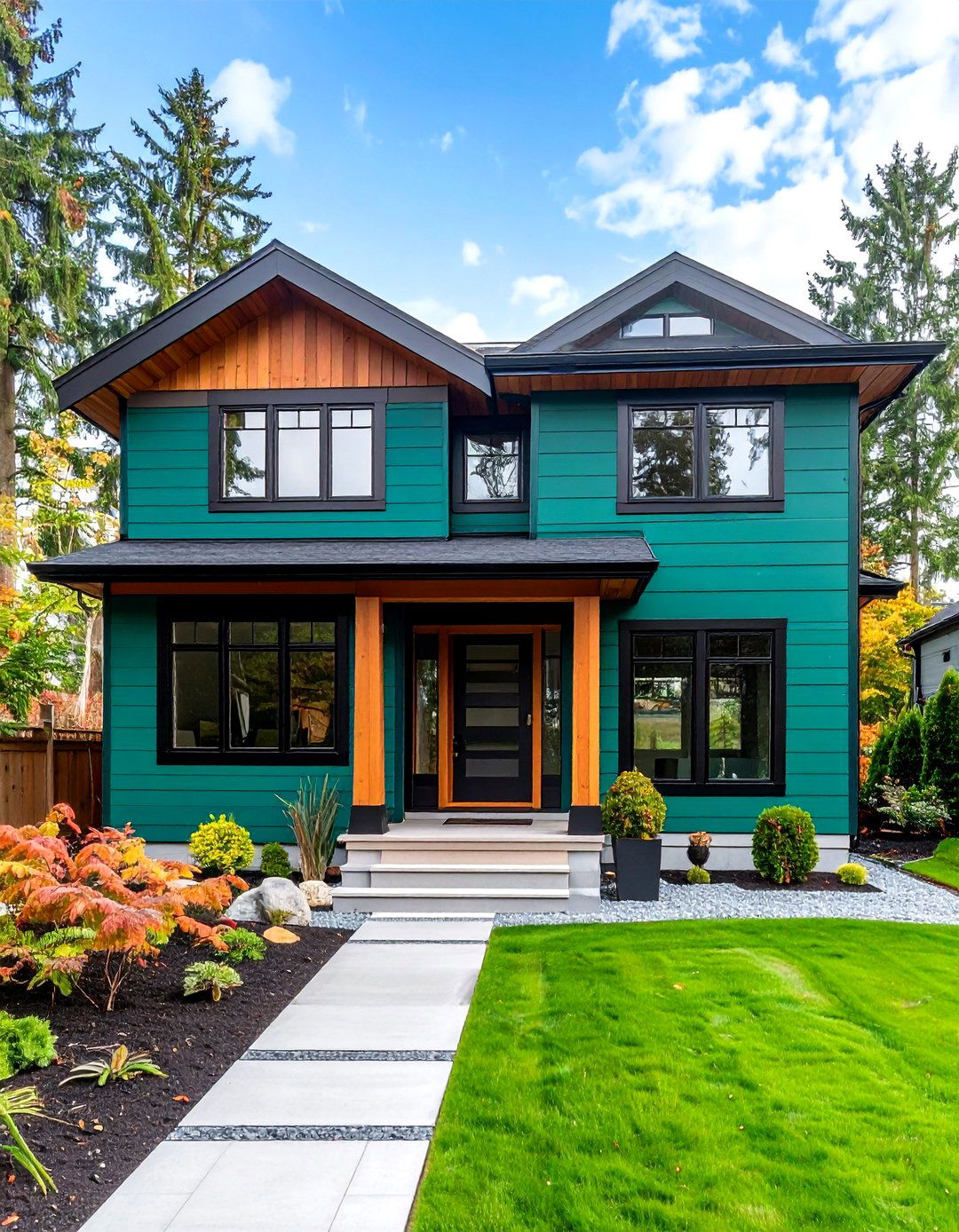
Boxy mid-century or contemporary builds gain gravitas when wrapped in a smooth emerald or greenblack render and etched with skinny black reveals around windows and parapets. Limit additional colours to a pale cedar entry slab or matte graphite address numerals so the tonal block remains the star. This disciplined scheme photographs especially well for short-term-rental listings seeking an “architect’s cabin” vibe.
5. Energy-Smart Colour Choice
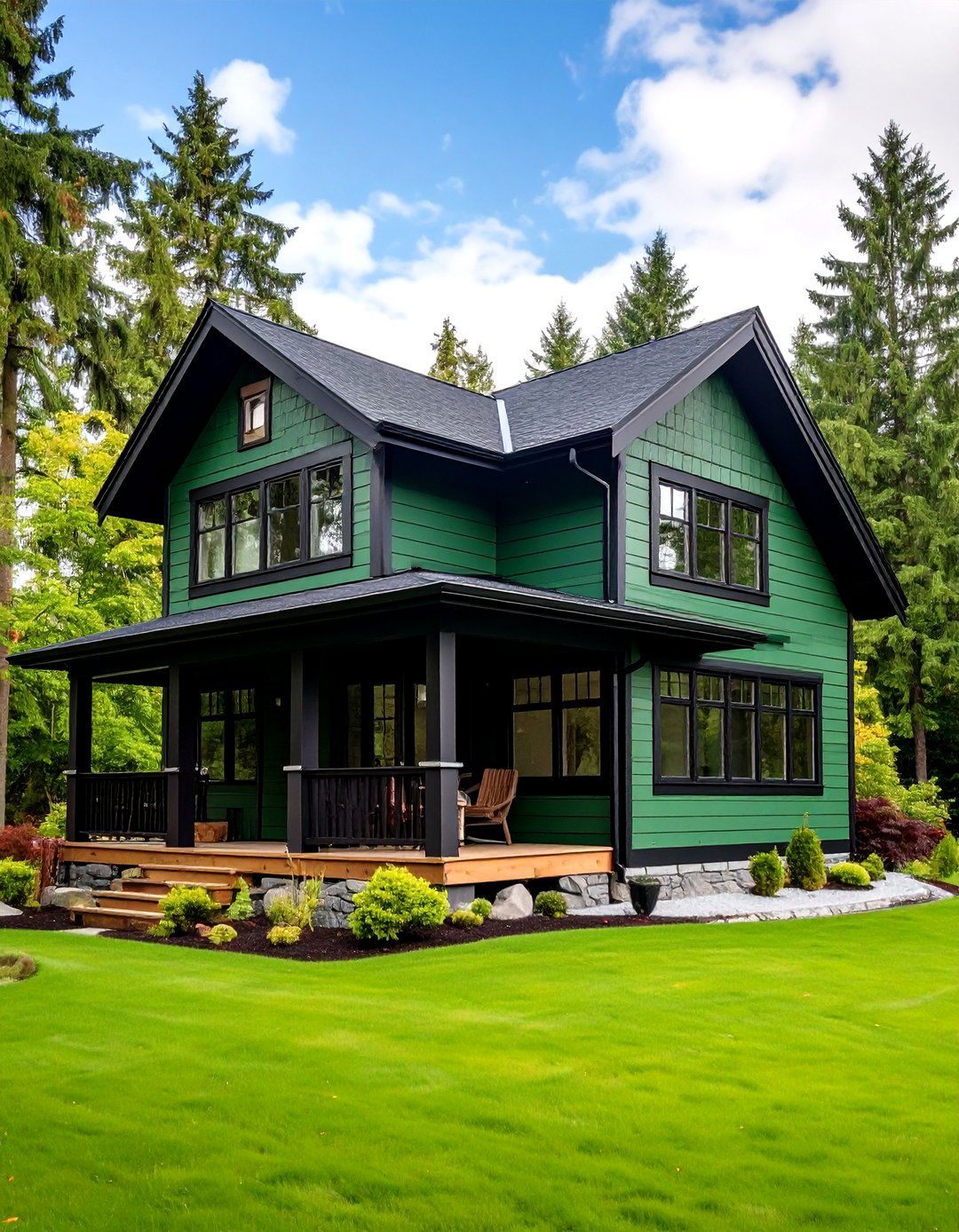
Benjamin Moore rates “Forest Green 2047-10” at an LRV of just 7.58, meaning it absorbs rather than reflects heat—welcome in cooler zones but demanding ventilated attics in hot ones. Offset potential heat build-up by specifying black trim in a UV-stable satin enamel that resists chalking, and upgrade soffit vents or ridge vents to keep roof decks below 52 °C.
6. Choosing the Perfect Black Trim Finish
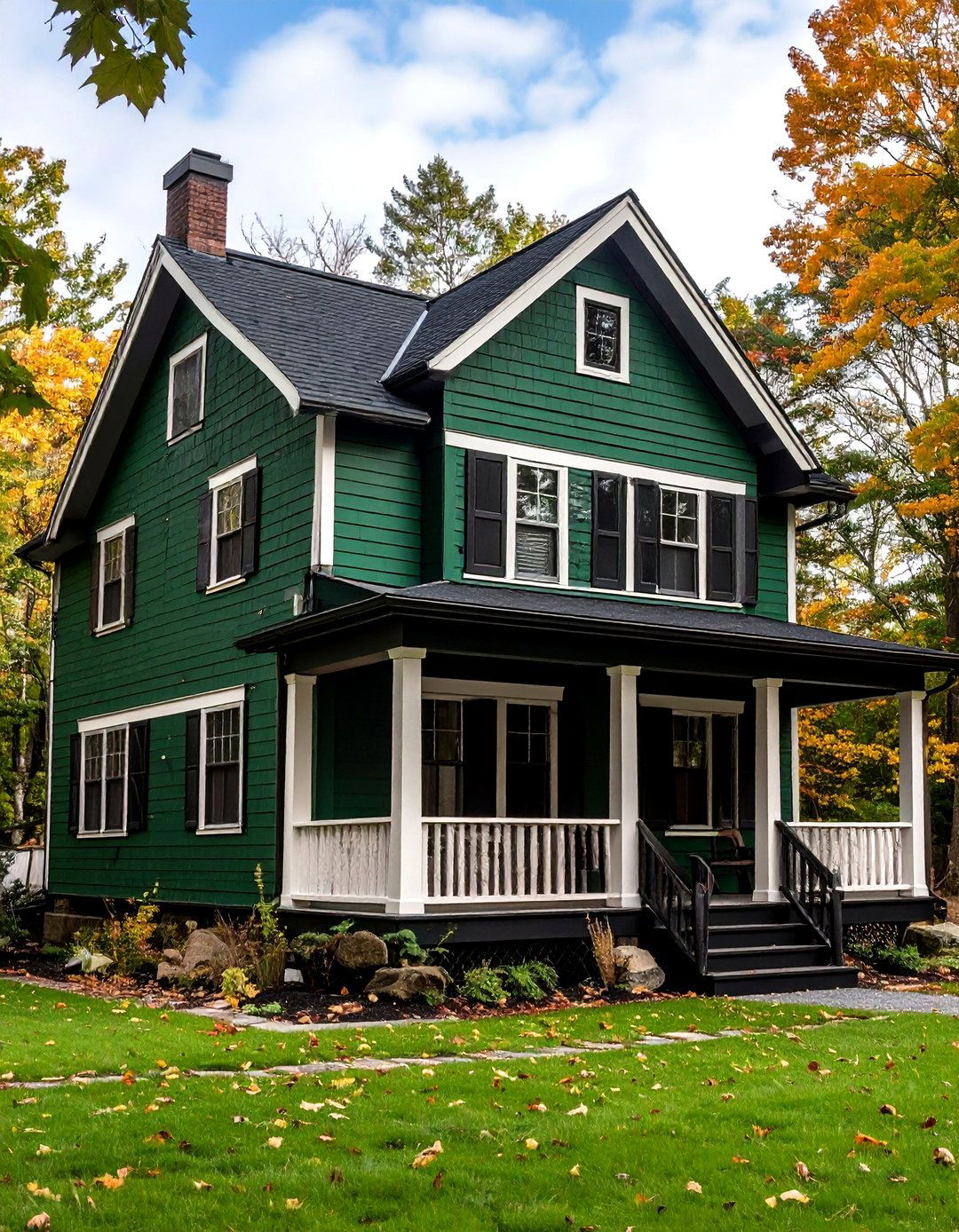
Matte black reads relaxed and hides dust, glossy black adds formal glamour, while satin splits the difference—a fact decorators highlight when fine-tuning exteriors. Sample all three on off-cuts left outdoors for a week; observe at midday and twilight before committing. Remember that glossier trims spotlight surface imperfections, so fill and sand boards meticulously first.
7. Statement Black-Framed Windows
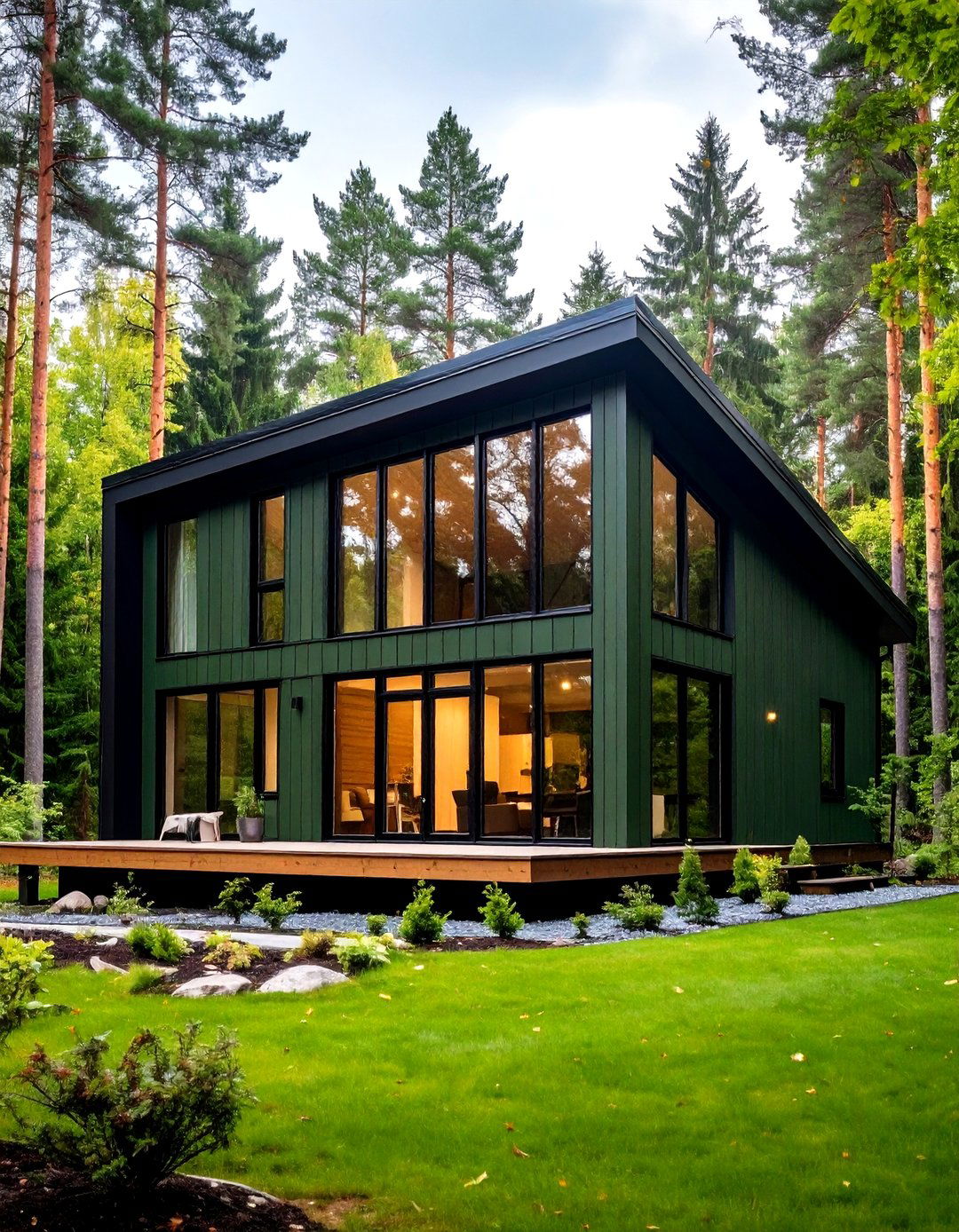
Switching from white vinyl to thermally-broken aluminium black frames instantly sharpens green walls and can shave 15 % off energy bills through improved seals and low-E glazing. If full replacement isn’t in budget, paint existing wood jambs with high-temperature exterior enamel and fit black metal cladding over sills to mimic factory units.
8. Curated Front-Door Contrasts
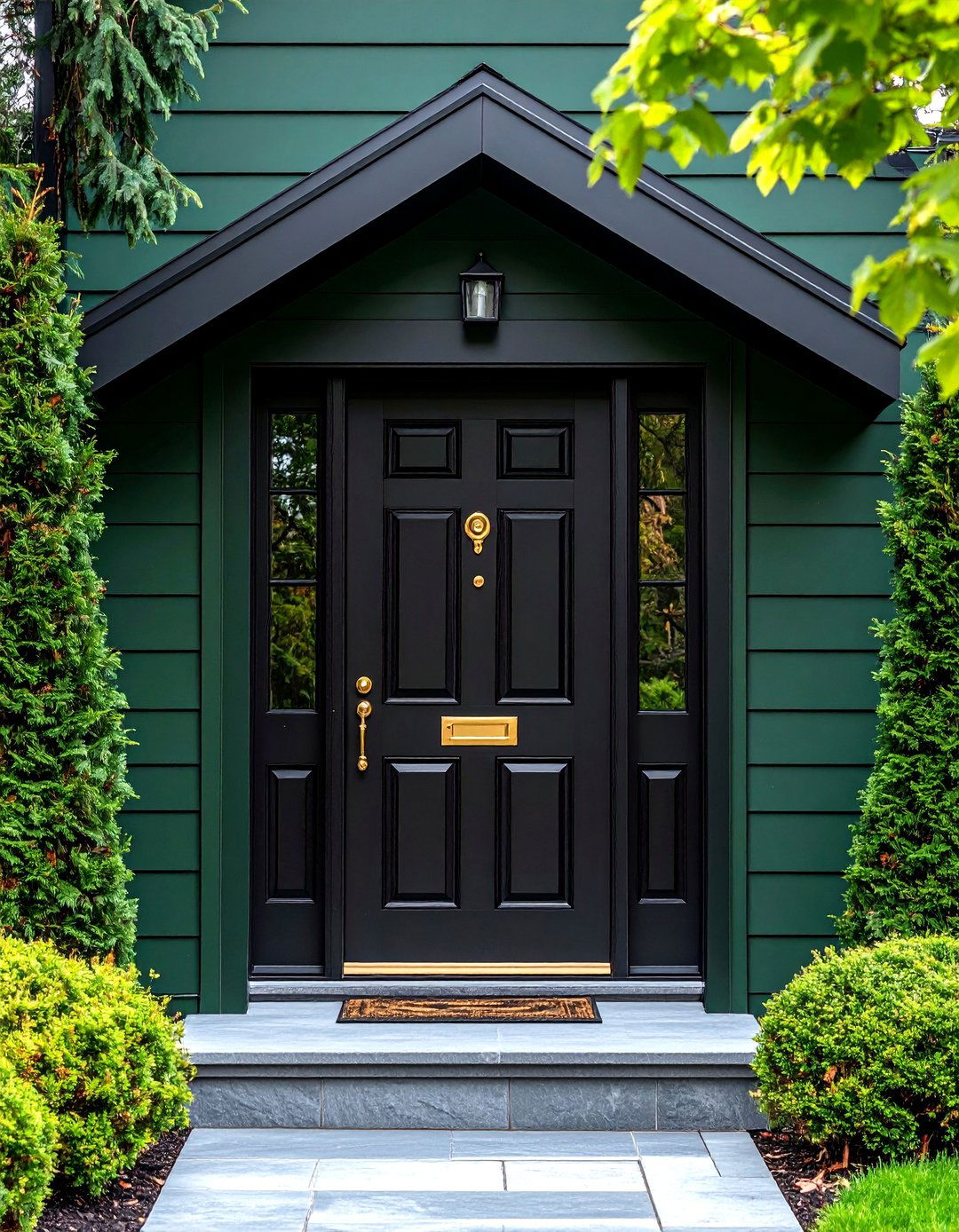
Designers often anchor a forest green house with a black-on-black front door—panels, jamb, and hardware unified—creating a powerful focal point that guides guests straight to the entry. For extra depth, install a satin-brass lever or smart lock; the small pop of warm metal reads intentional rather than busy.
9. Landscaping That Makes Green Pop
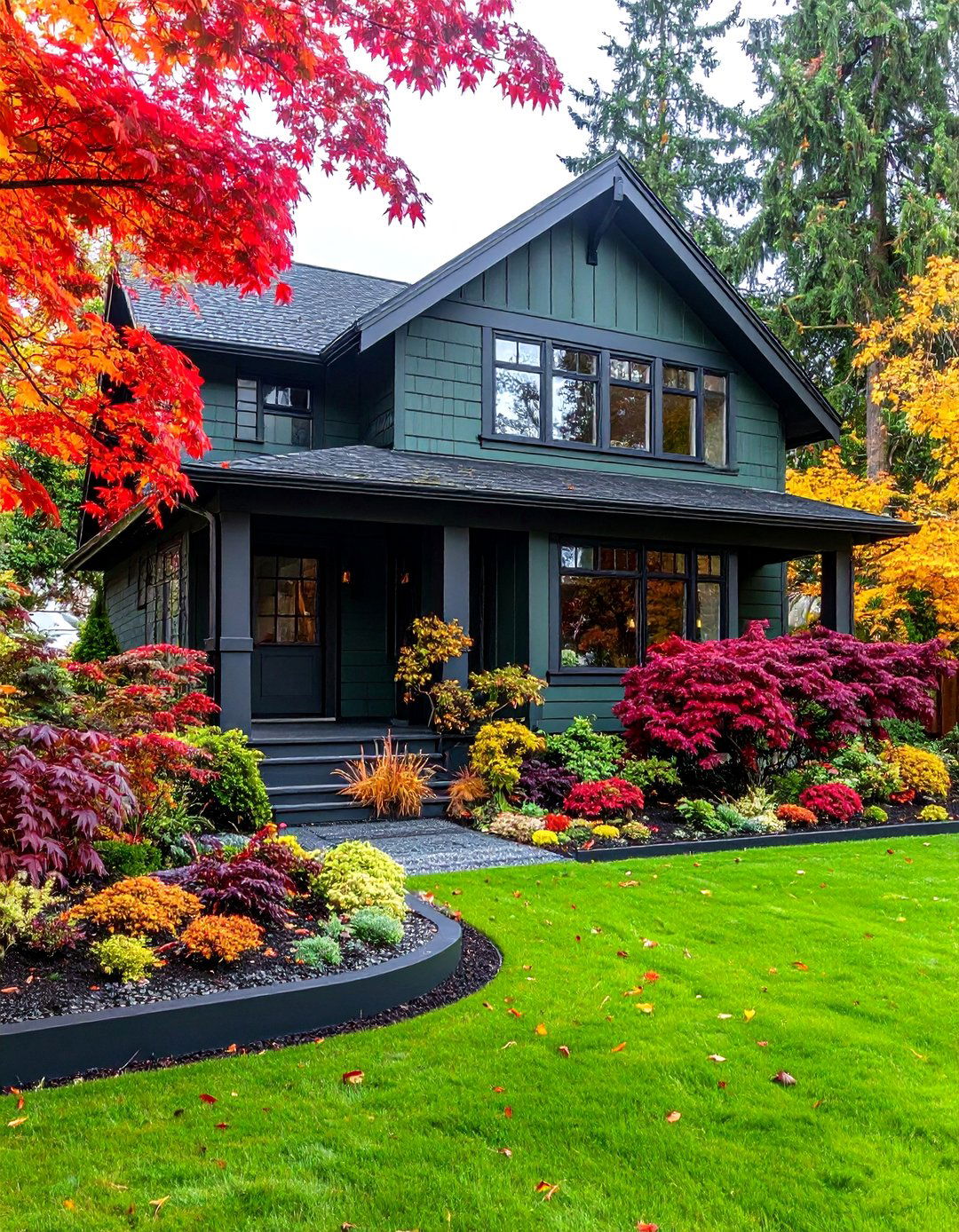
A dark green exterior melts into foliage, so punctuate it with layered plantings of burgundy Japanese maple, chartreuse hostas, and white hydrangeas to create depth. Accent beds with matte-black steel edging that echoes the trim; this rhythm visually ties house and garden while containing aggressive groundcovers.
10. Night-Time Drama with Layered Lighting
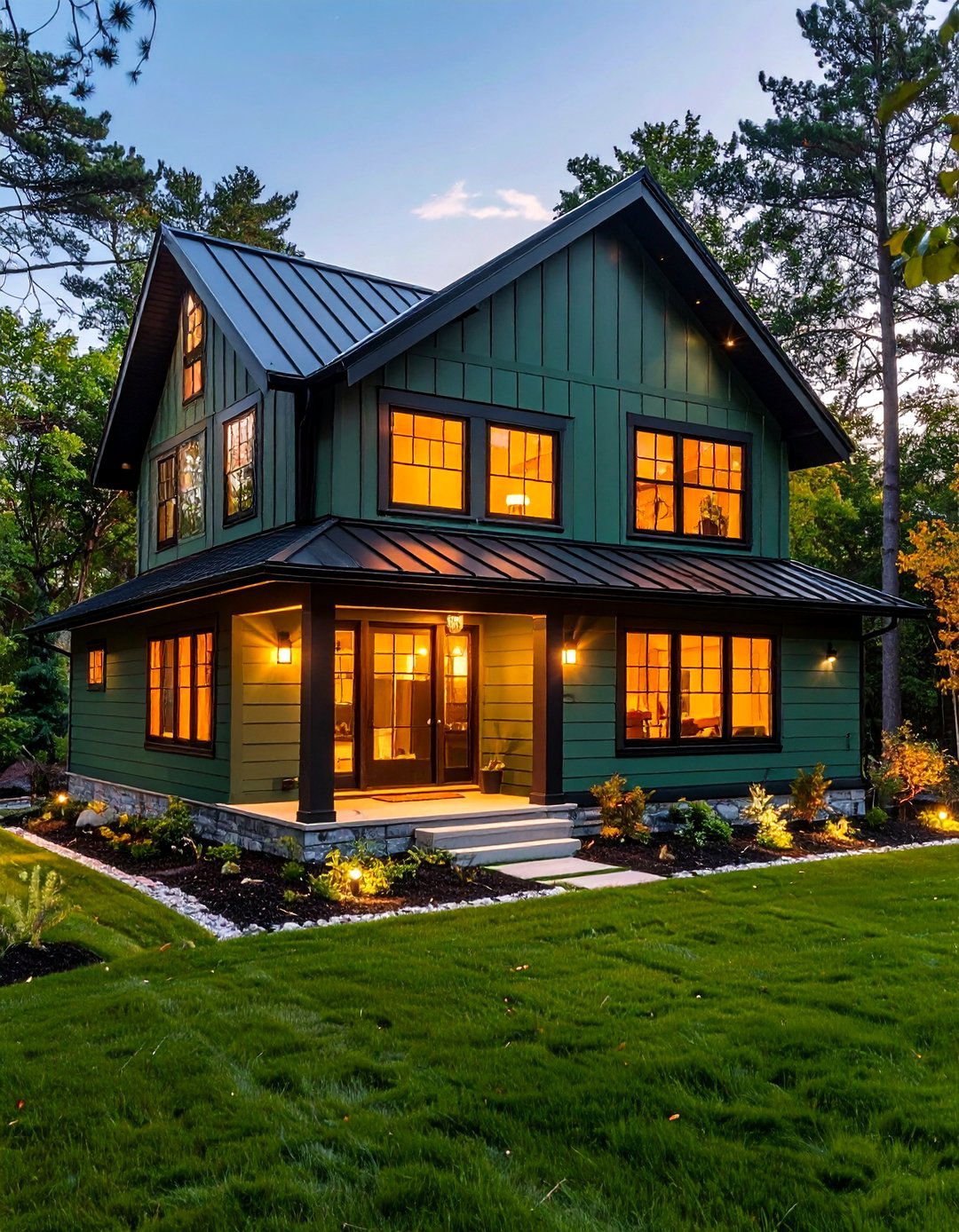
Warm-white uplights grazing the forest green boards reveal subtle texture, while down-lights under black eaves frame windows like art. Solar path lights in a powder-coated black finish reinforce the palette and eliminate wiring headaches—look for fixtures with 2700 K LEDs to avoid harsh blue glare.
11. Mixing Wood, Metal, and Paint for Tactile Richness
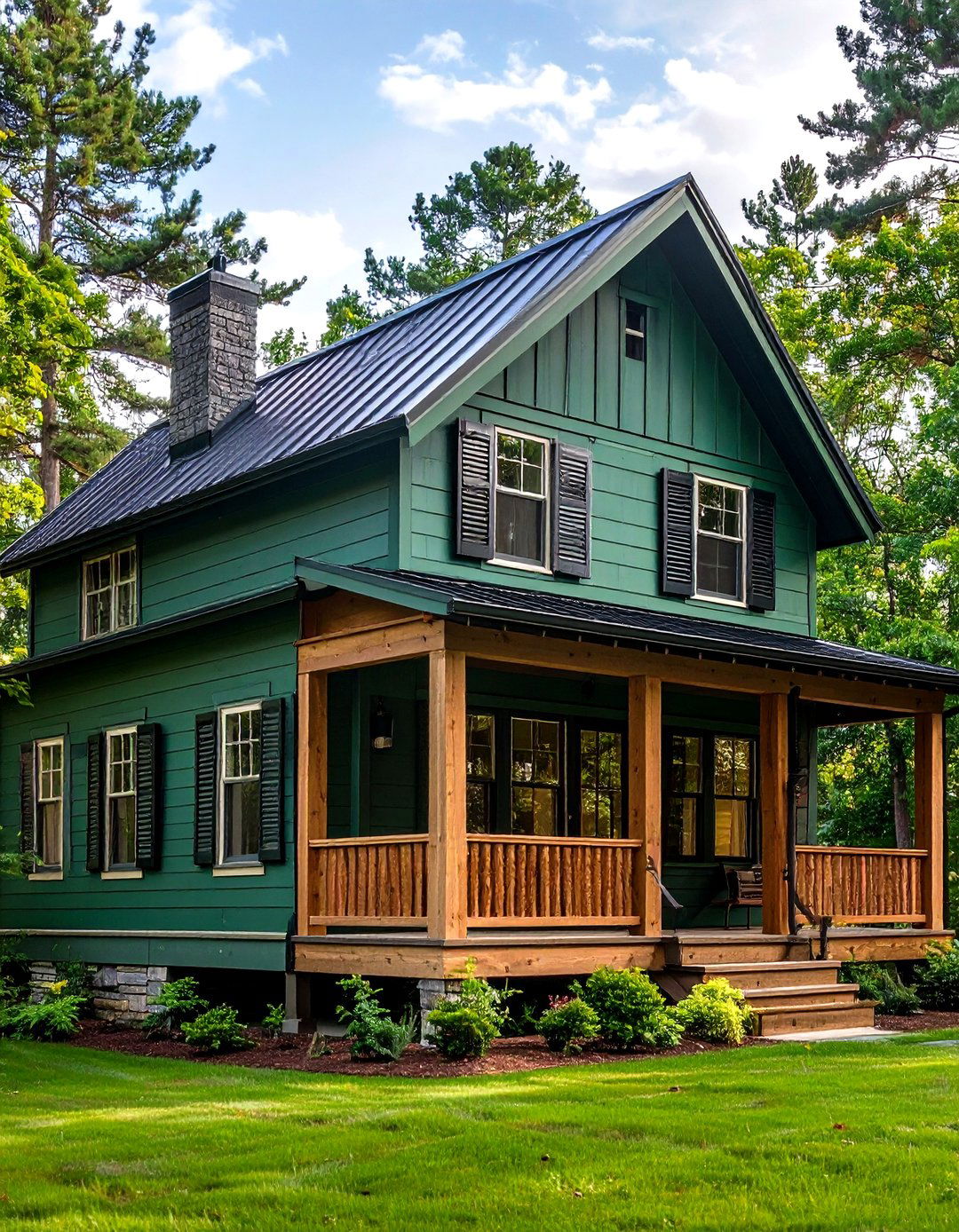
Pairing black standing-seam metal porch roofs with cedar shutters against green siding layers modern precision over rustic warmth. Seal cedar in a clear UV oil so its honey tone contrasts elegantly, or leave it to silver if your climate supports graceful weathering.
12. Picking the Right Siding Material
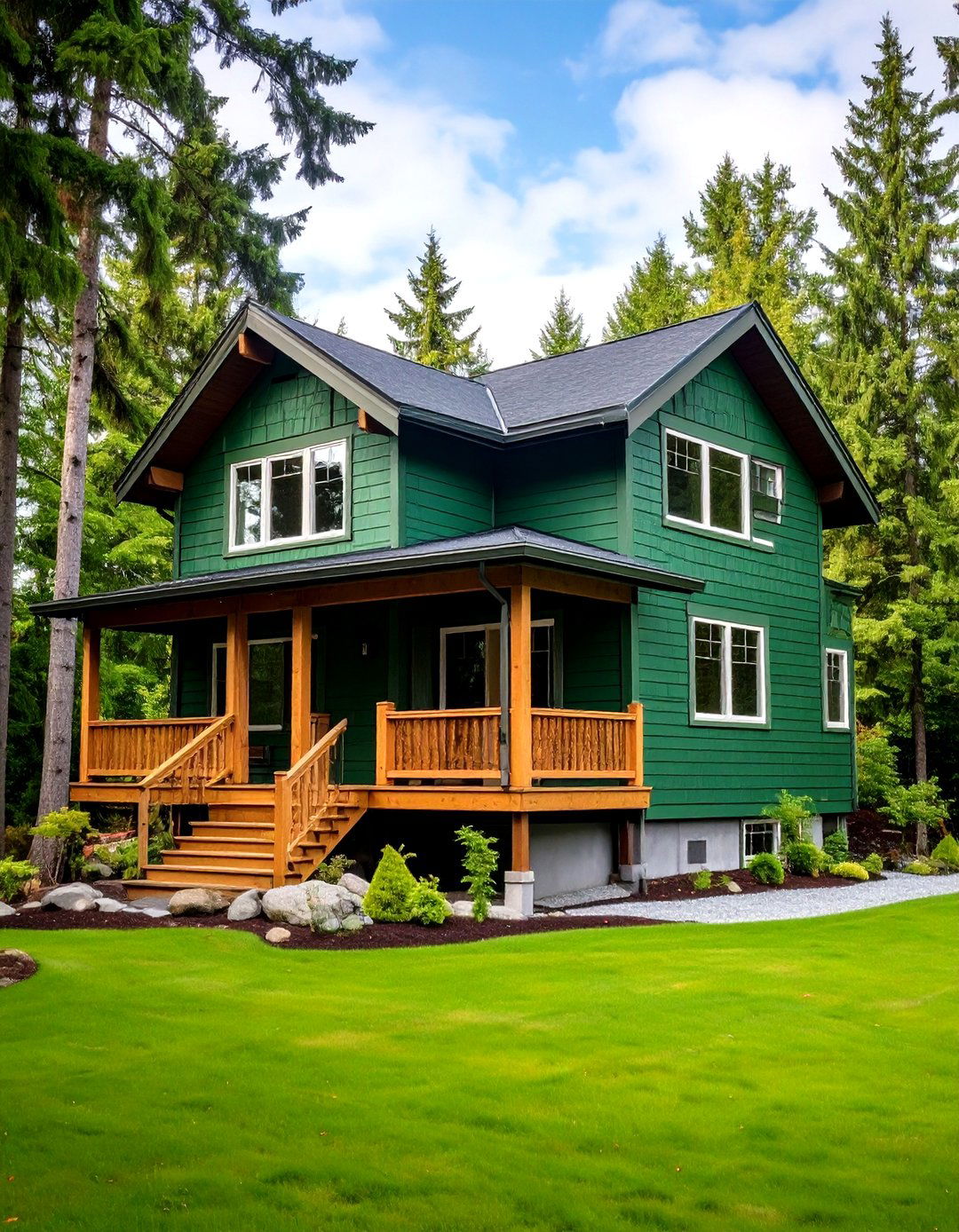
Vinyl, engineered wood, and fibre-cement all now ship in factory-baked forest greens that resist fade for 15 + years; natural wood remains paint-ready but needs breathable stains. Calculate lifecycle cost, not just install price: fibre-cement demands extra blade-wear but shrugs off fire embers, a rising concern in drier zones.
13. Maintenance Made Manageable
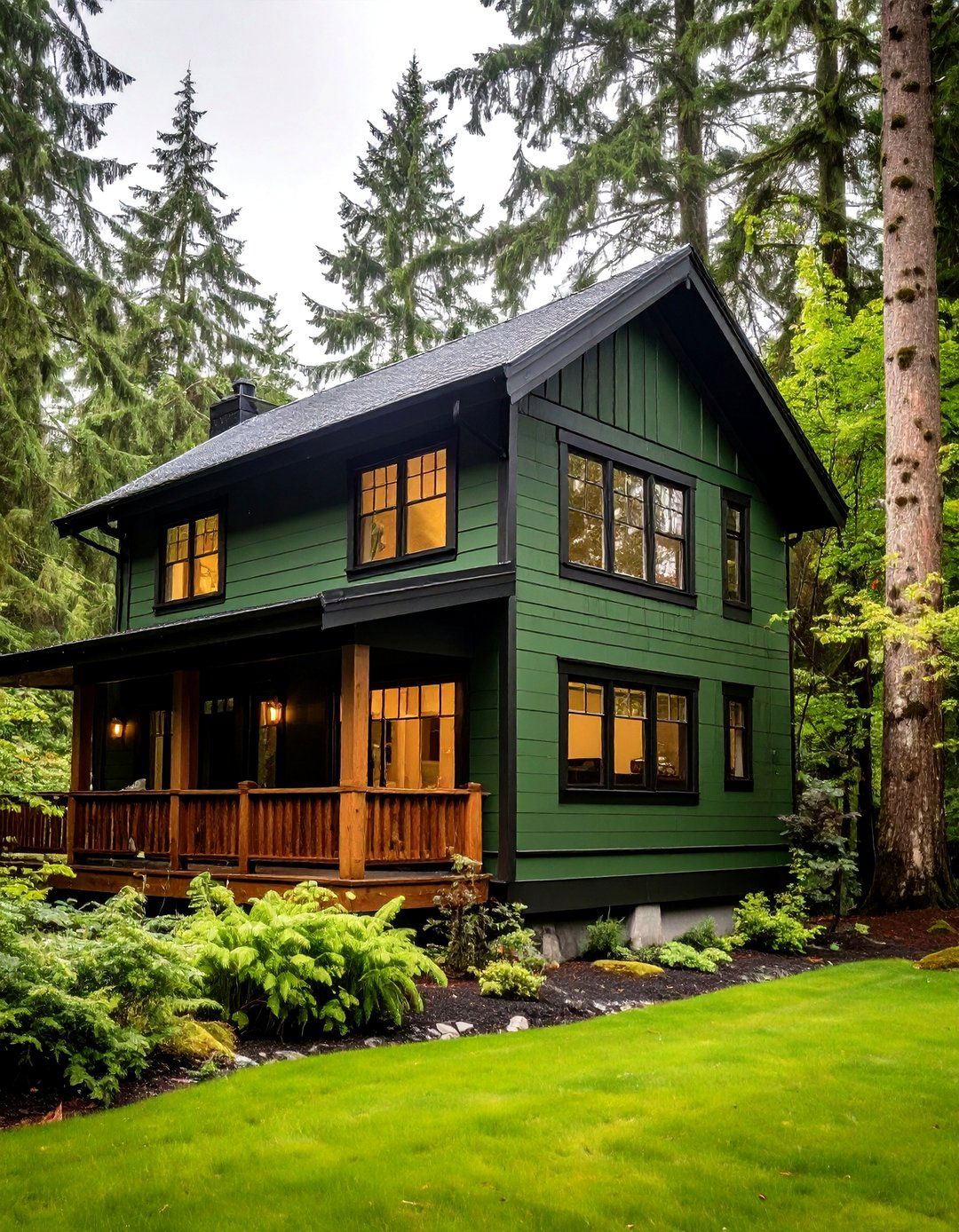
Deep hues can spotlight streaks, so plan an annual low-pressure rinse—Bob Vila recommends gentler settings on vinyl and masonry to avoid water intrusion. A quick scrub of black trim with biodegradable car-wash soap revives sheen without stripping finish; schedule it alongside gutter clearing each spring.
14. Sustainability Credentials
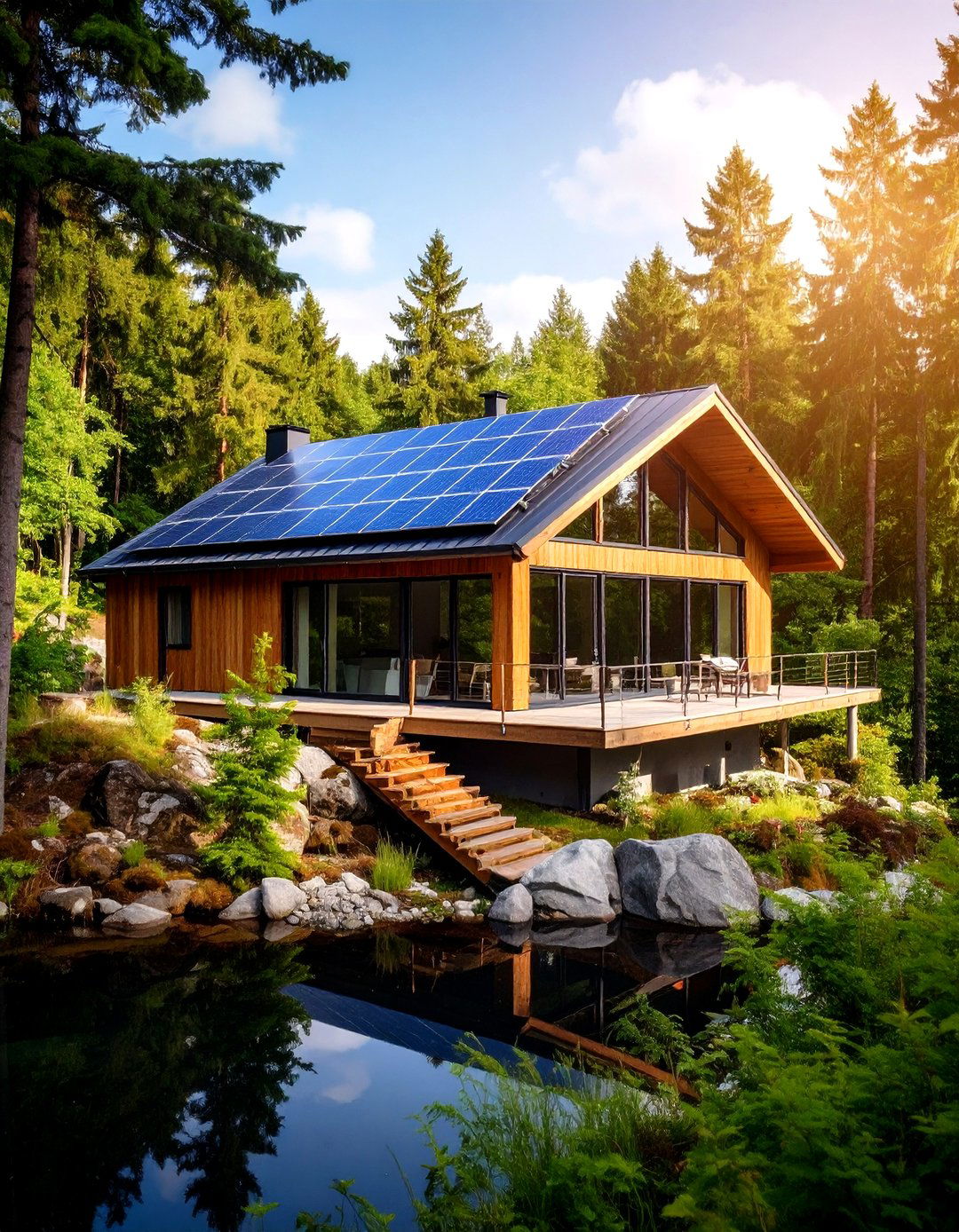
Green façades resonate doubly when the build embraces net-zero goals; Architectural Digest notes prestige listings touting recycled concrete, solar arrays, and FSC-certified timber behind their lush colourways. Echo that ethos by specifying low-VOC paint and reclaimed wood porch decking stained black to match trim.
15. Climate-Responsive Tweaks
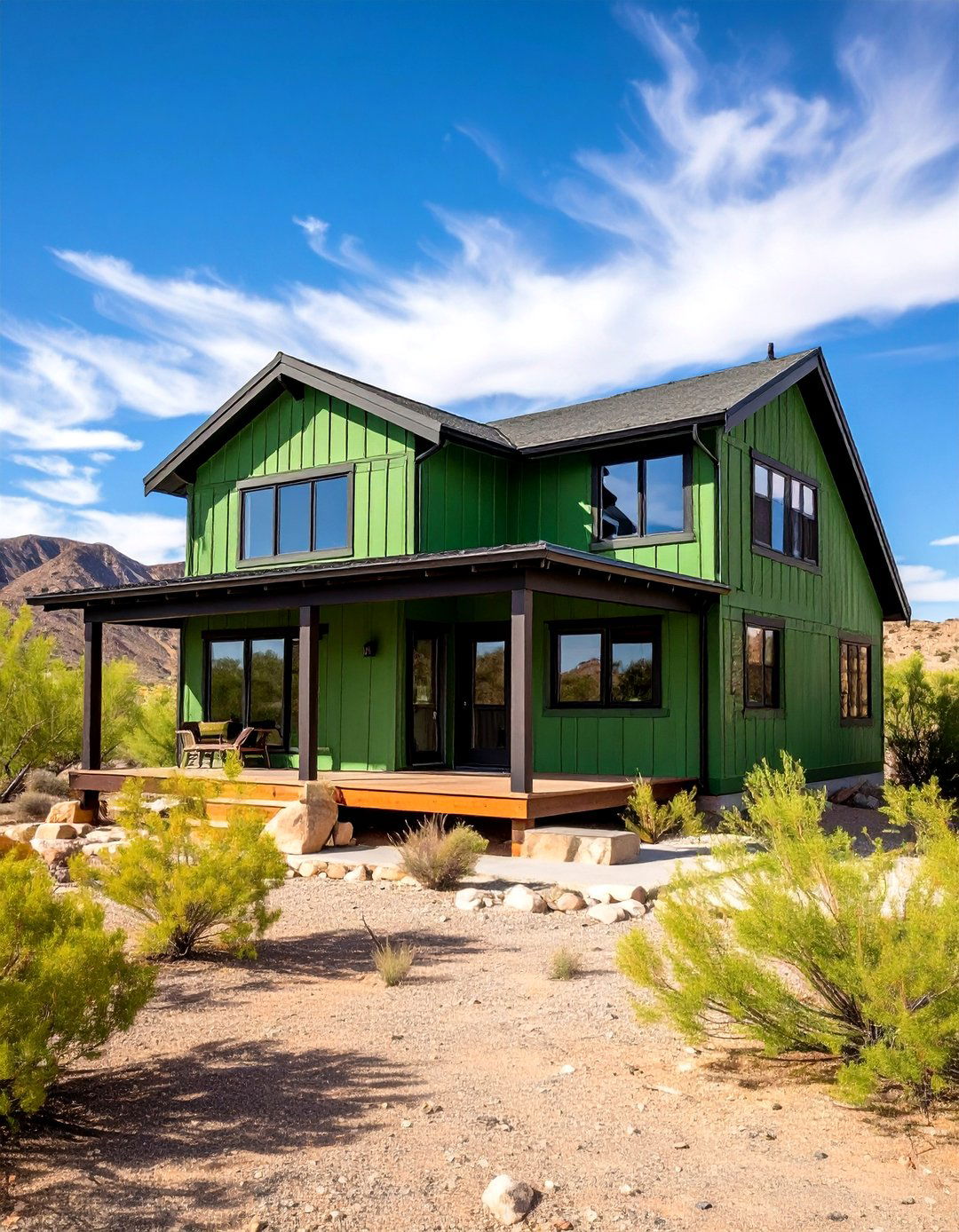
In damp forests, specify mould-inhibiting stain undercoats; in high-sun deserts, opt for infrared-reflective black enamel to reduce surface temps by up to 10 °C. Matching strategy to climate prolongs coating life and keeps HVAC loads predictable.
16. Heritage-Inspired Detailing
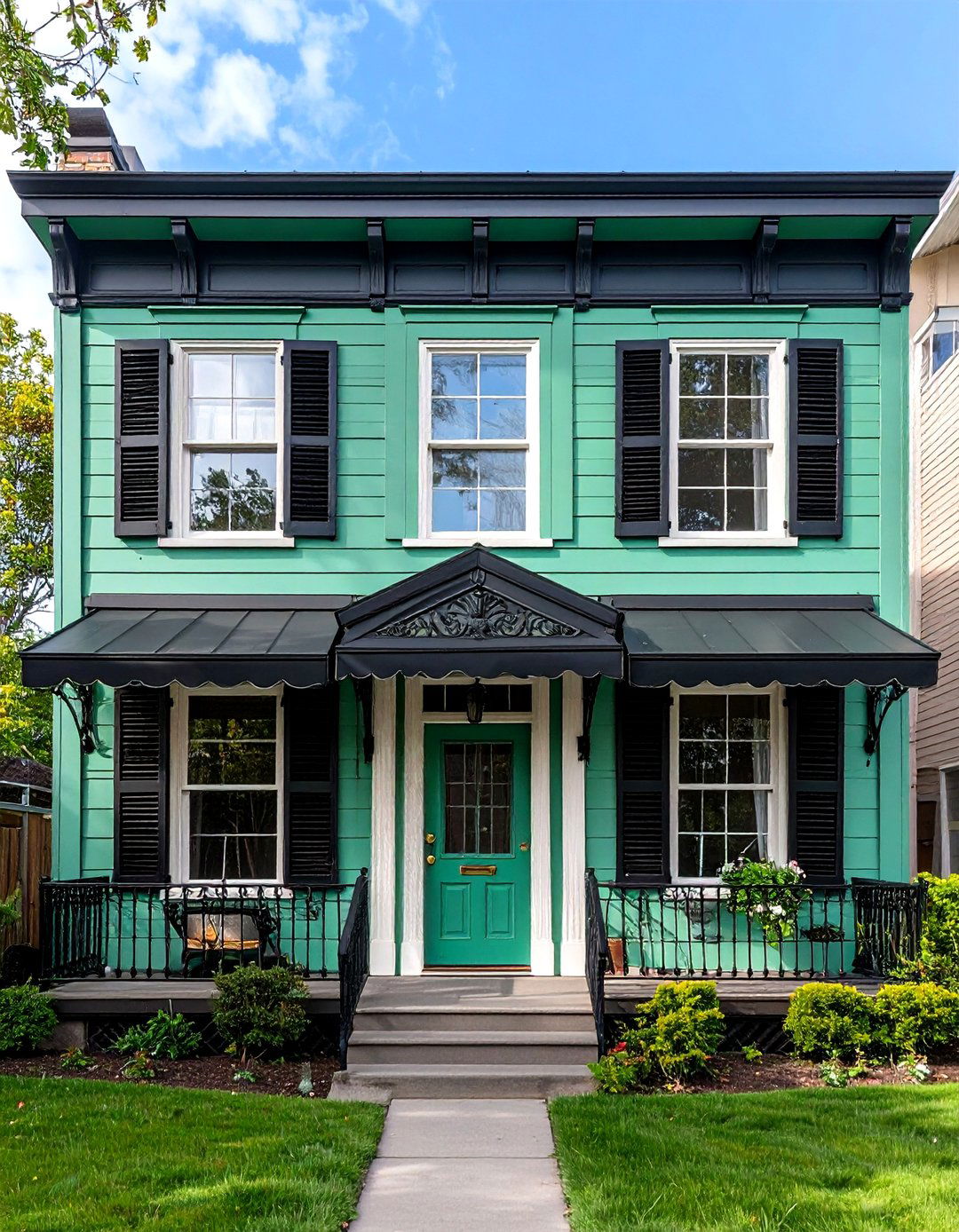
A Laurel Canyon renovation shows how thin black steel awnings and divided-light windows sit comfortably on a 1960s envelope saturated in cool green, preserving character while looking current. Replicate the idea with simplified millwork—no ornate brackets—so the colour, not decoration, carries the heritage reference.
17. Urban Row-House Reinvention
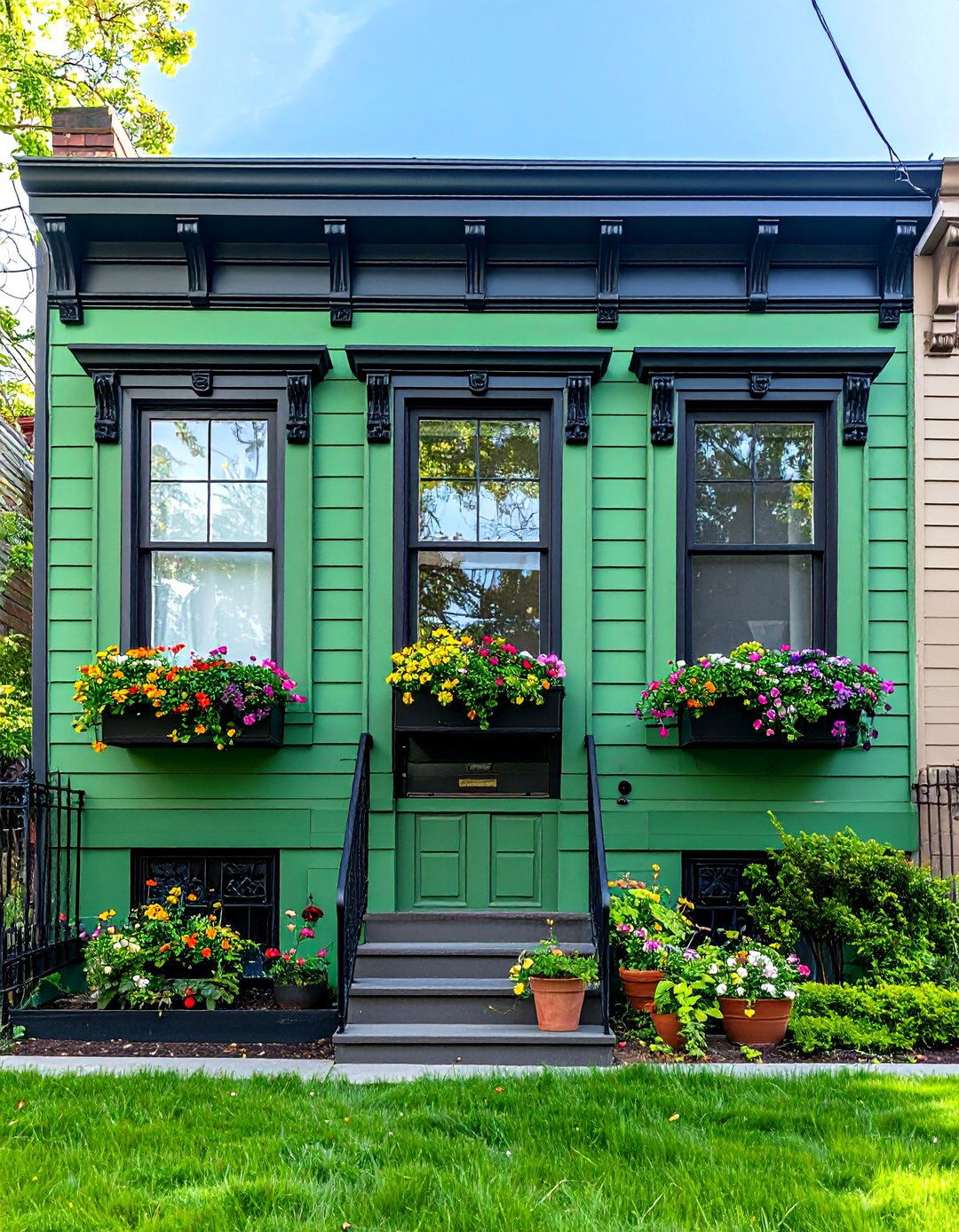
Space-starved city elevations read broader when painted a unified forest green; razor-thin black cornice lines draw the eye upward, visually extending height. Substitute bulky shutters with black steel flower boxes for a sleeker silhouette and extra micro-garden real estate.
18. Compact Cabins and Sheds
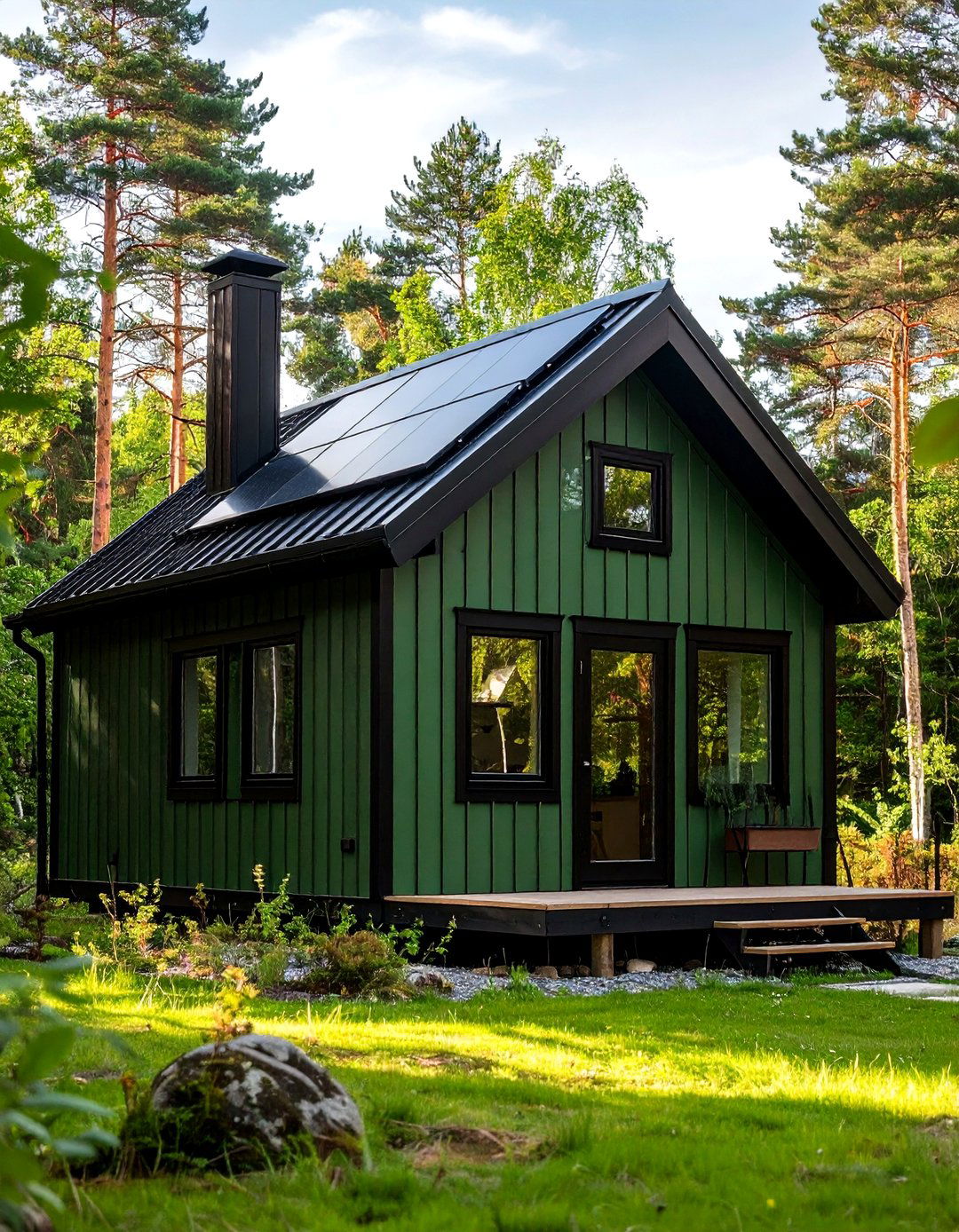
Tiny houses clad in deep green corrugated panels and trimmed in black blend into woodland sites, allowing owners to forgo special zoning camouflage requirements while still feeling chic. Add a mirror-black solar chimney to ventilate and provide renewable power without visual clutter.
19. DIY Paint-Selection Workflow
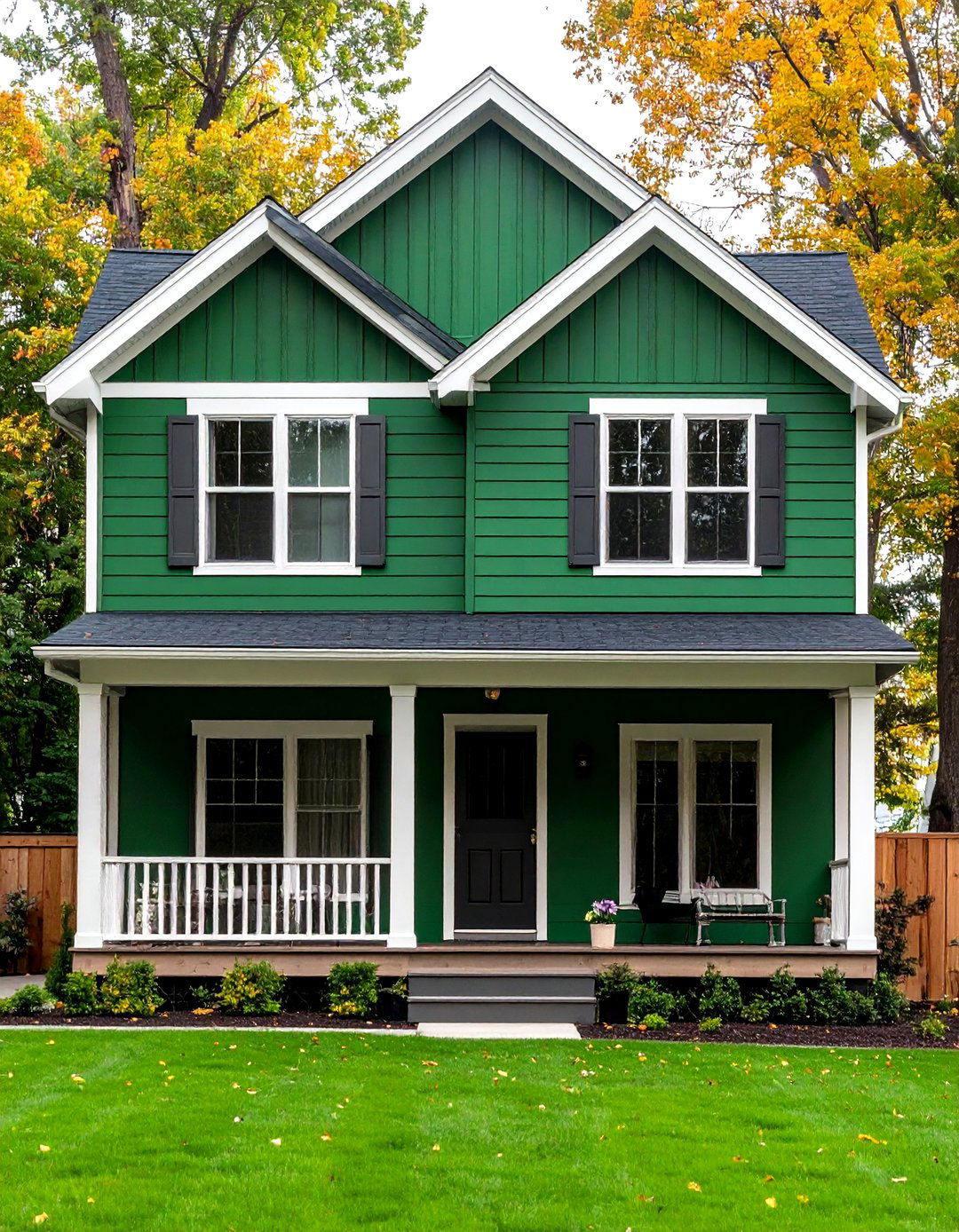
Start with three test quarts—one mid-green, one true forest, one near-black green—and brush 60 cm squares on north, south, east, and west walls; observe morning and dusk for undertone shifts. Seal decisions with a high-build exterior primer tinted halfway to the finish colour to improve coverage and longevity.
20. Return-on-Investment Snapshot
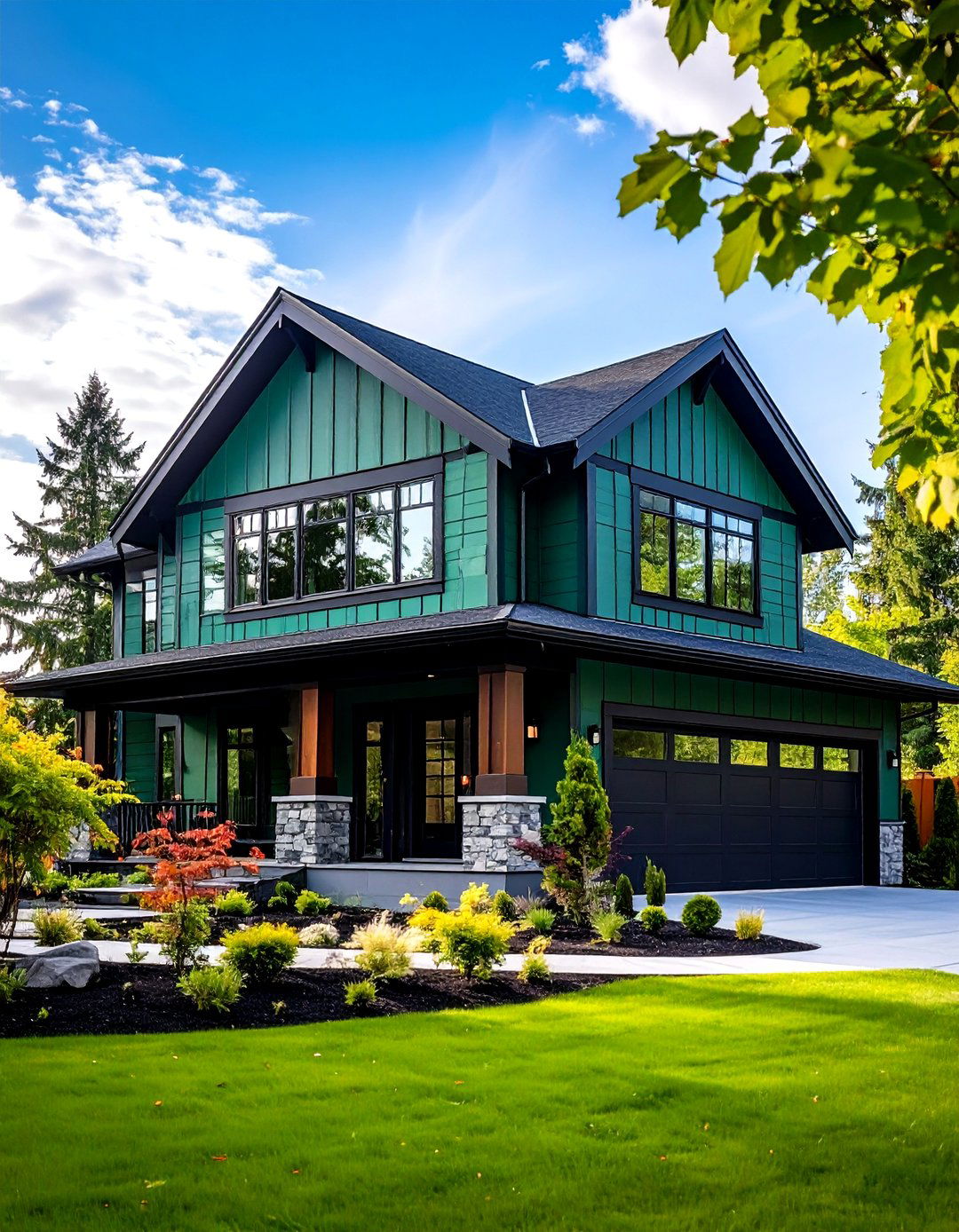
Home-building analysts link thoughtful colour plus trim packages—especially dramatic earth tones—to appraisal bumps of 2-4 % in competitive suburbs, thanks to stand-out photography and reduced perceived maintenance. By combining forest green siding, crisp black outlines, and the practical upgrades above, you lock in both immediate eye-catching appeal and long-term value resilience.
Conclusion:
A forest green house with black trim delivers more than striking aesthetics; it balances biophilic calm with architectural confidence, hides wear, supports energy-smart detailing, and signals modern sustainability—all while nudging property value upward. Reference these focused strategies, sample thoughtfully in your own light, and you’ll craft an exterior that feels timeless, tailored, and unmistakably yours.


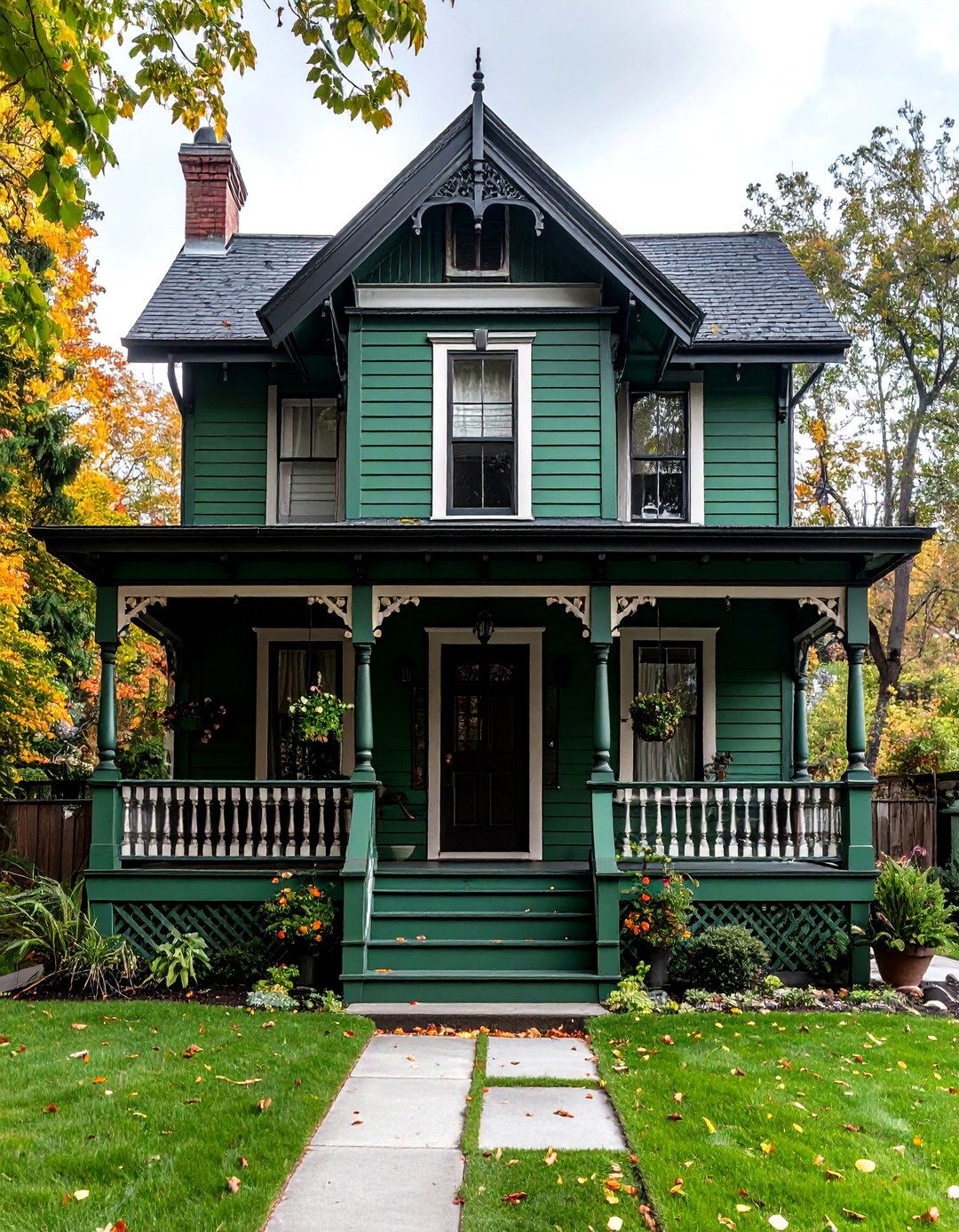
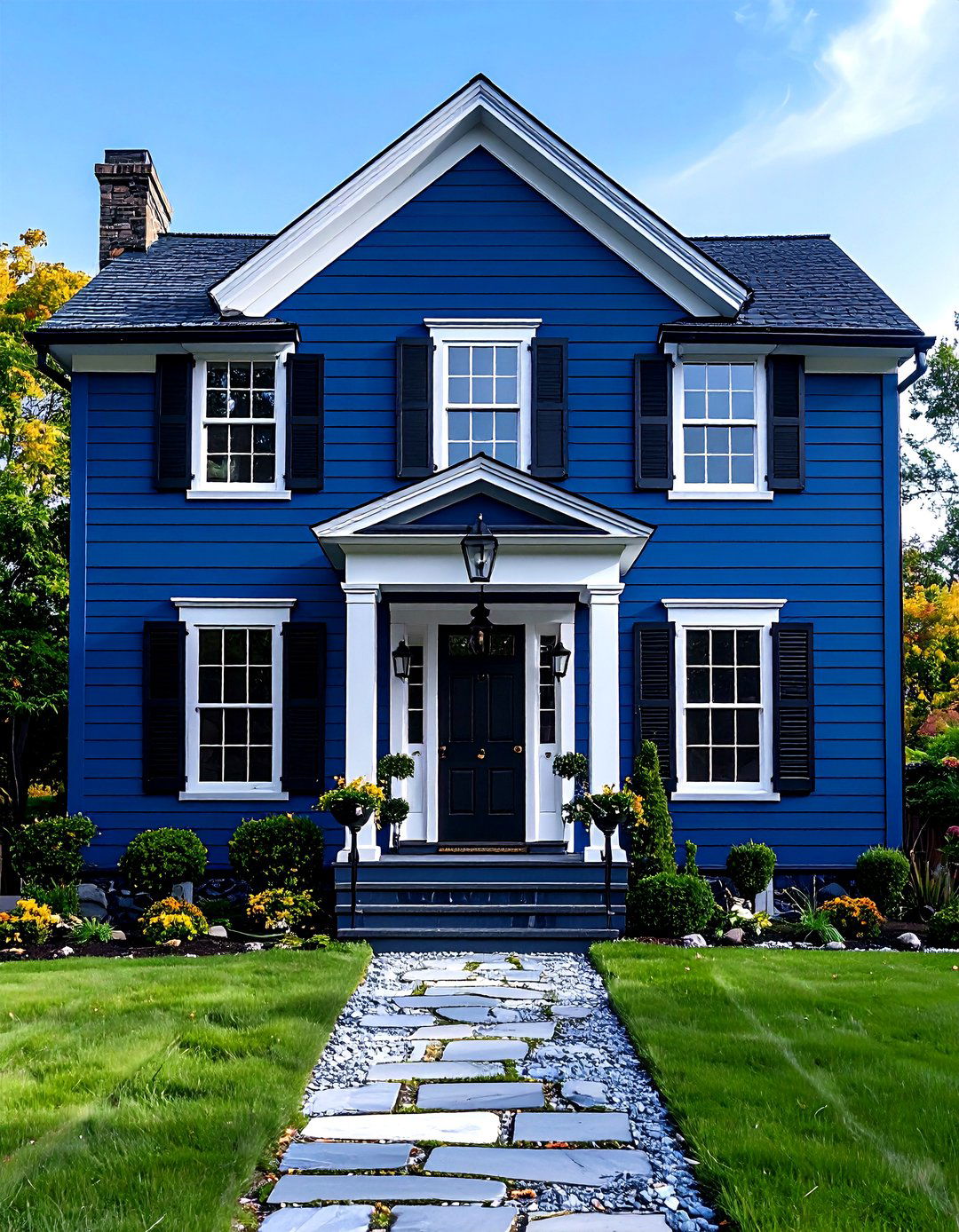
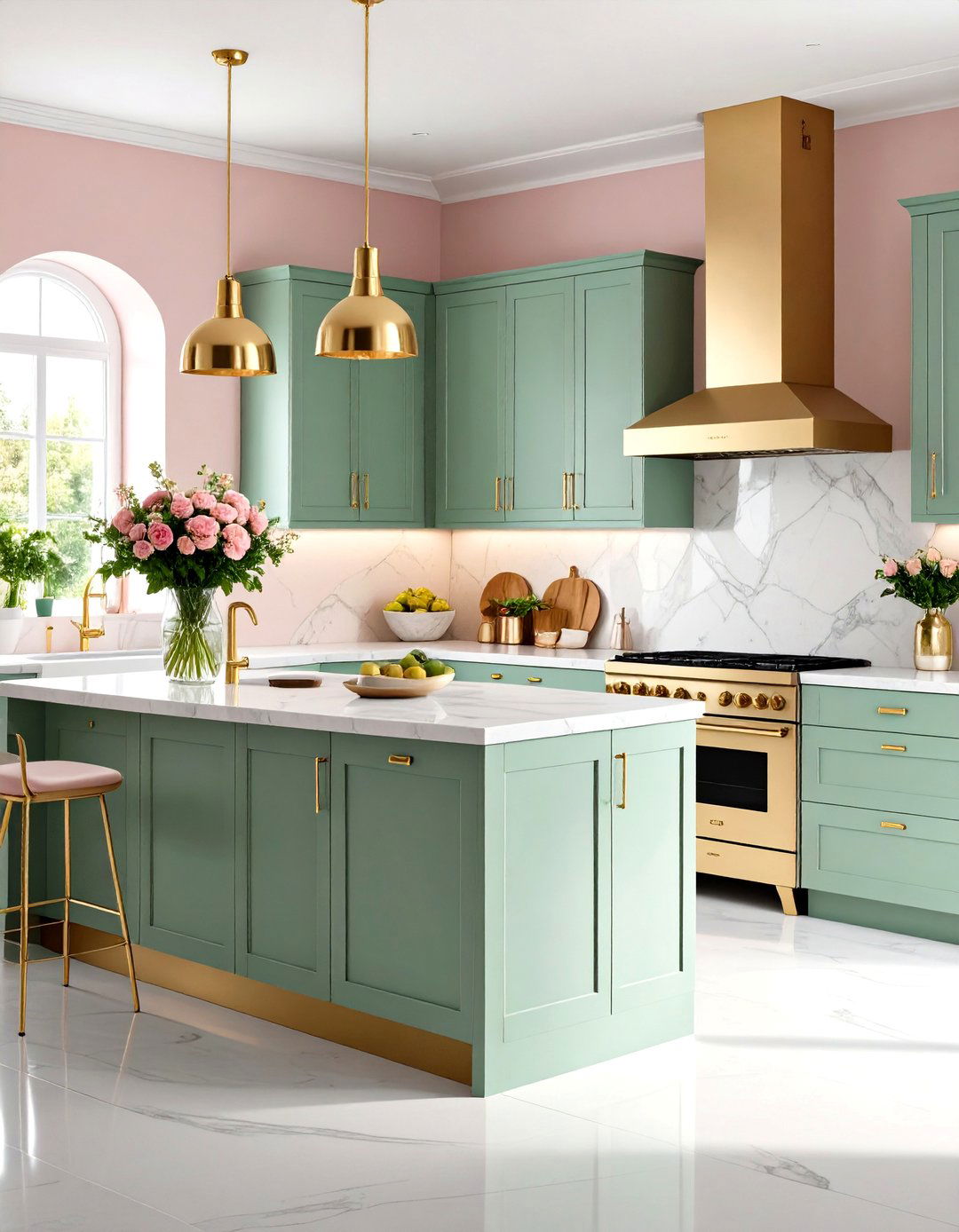
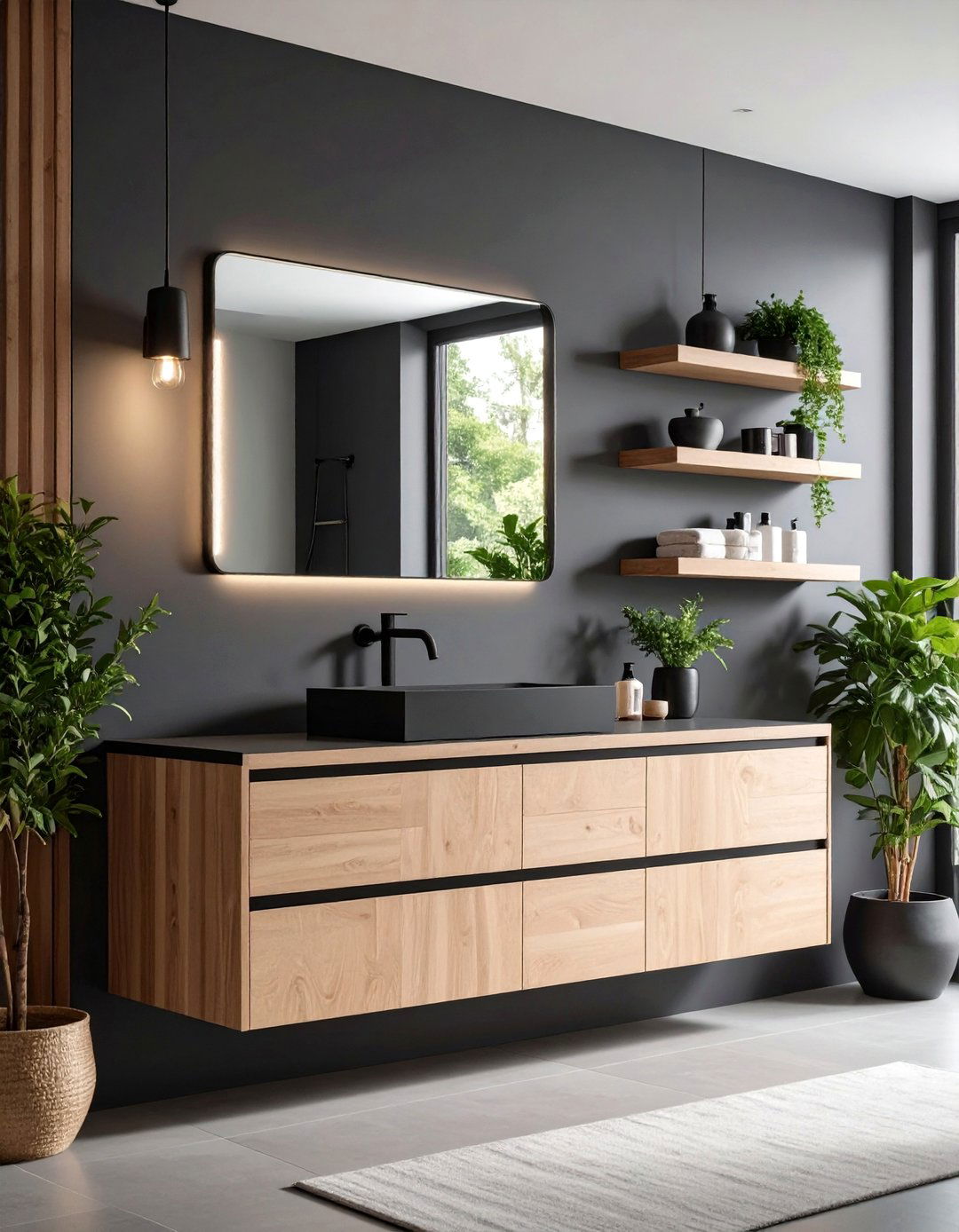
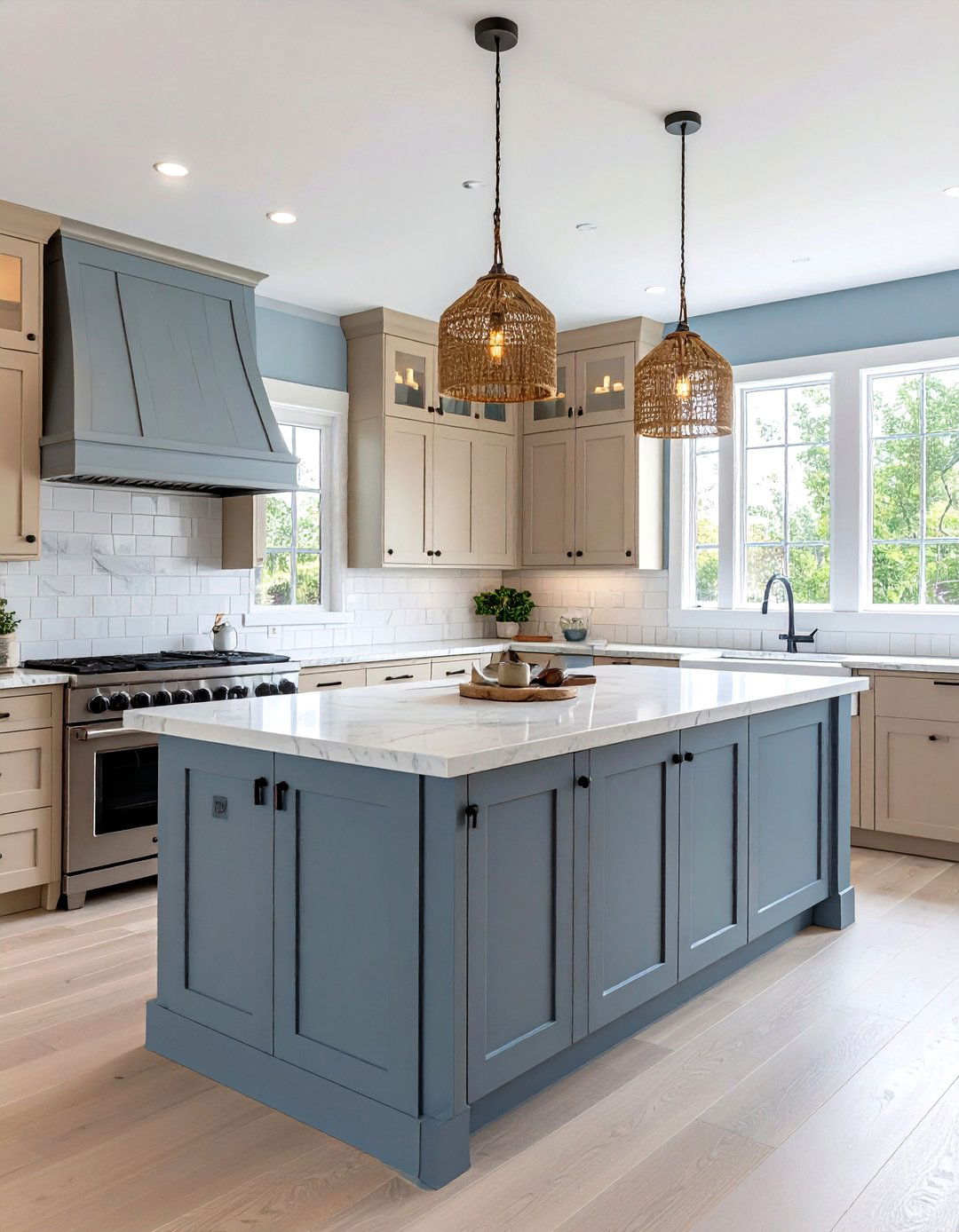
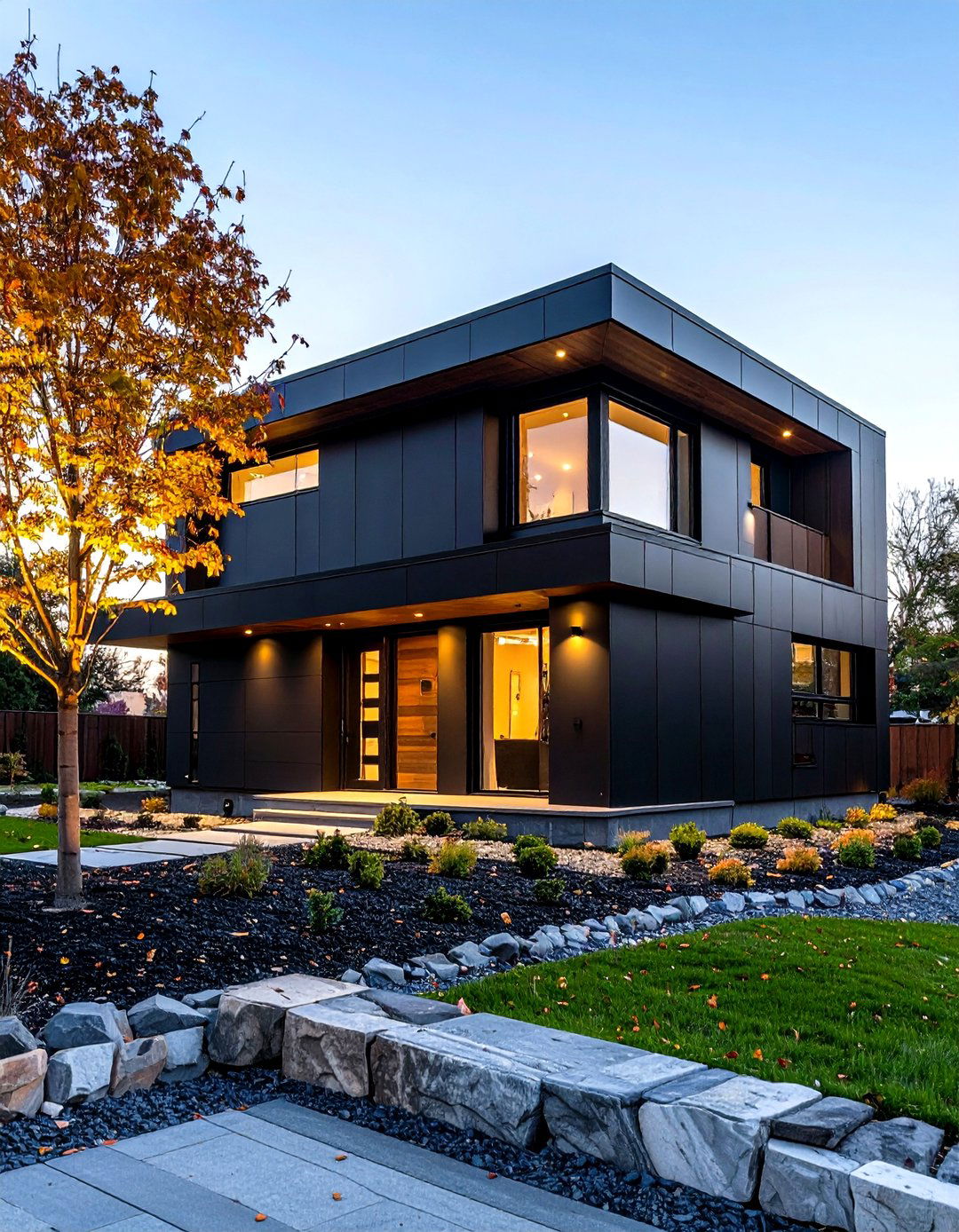
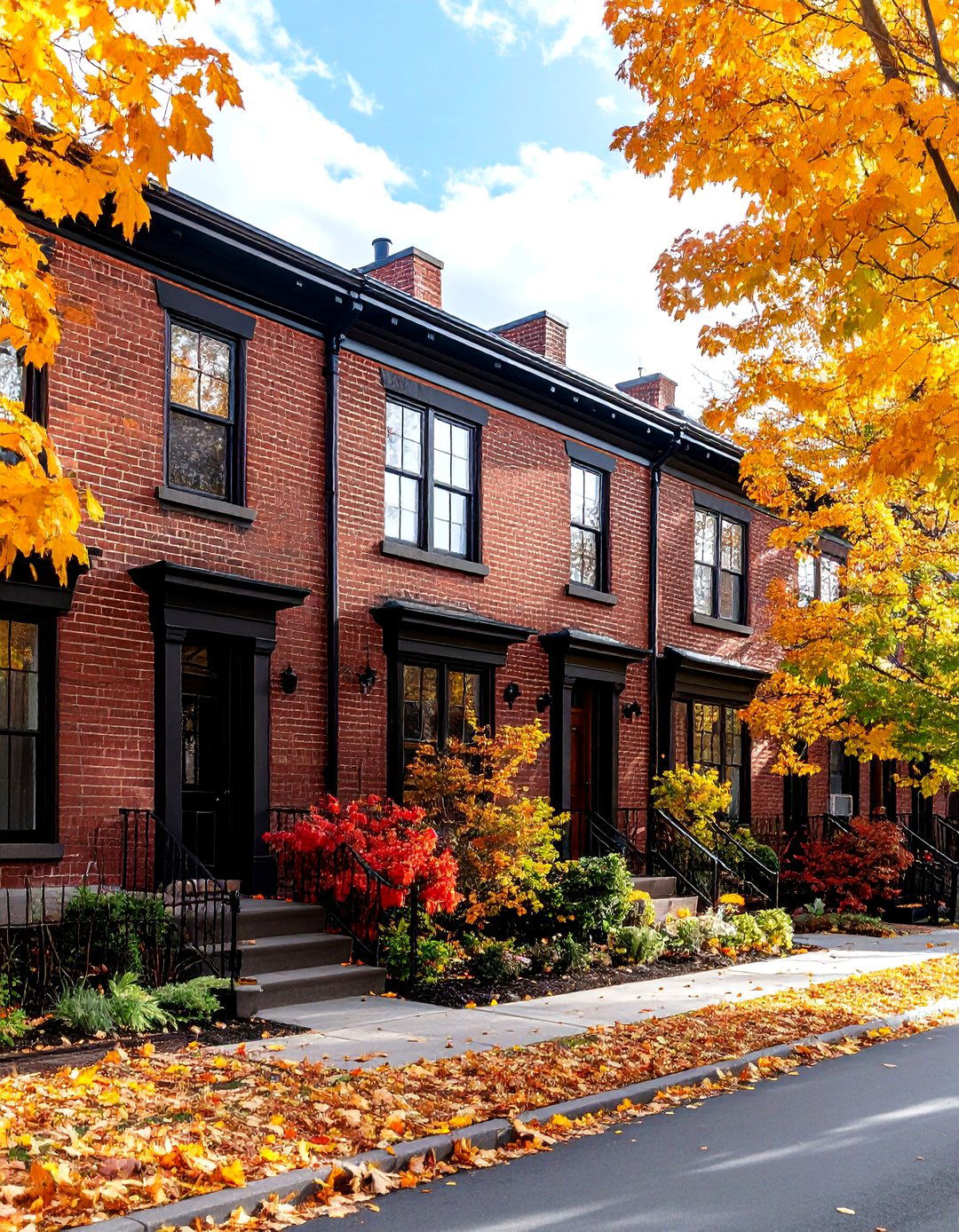
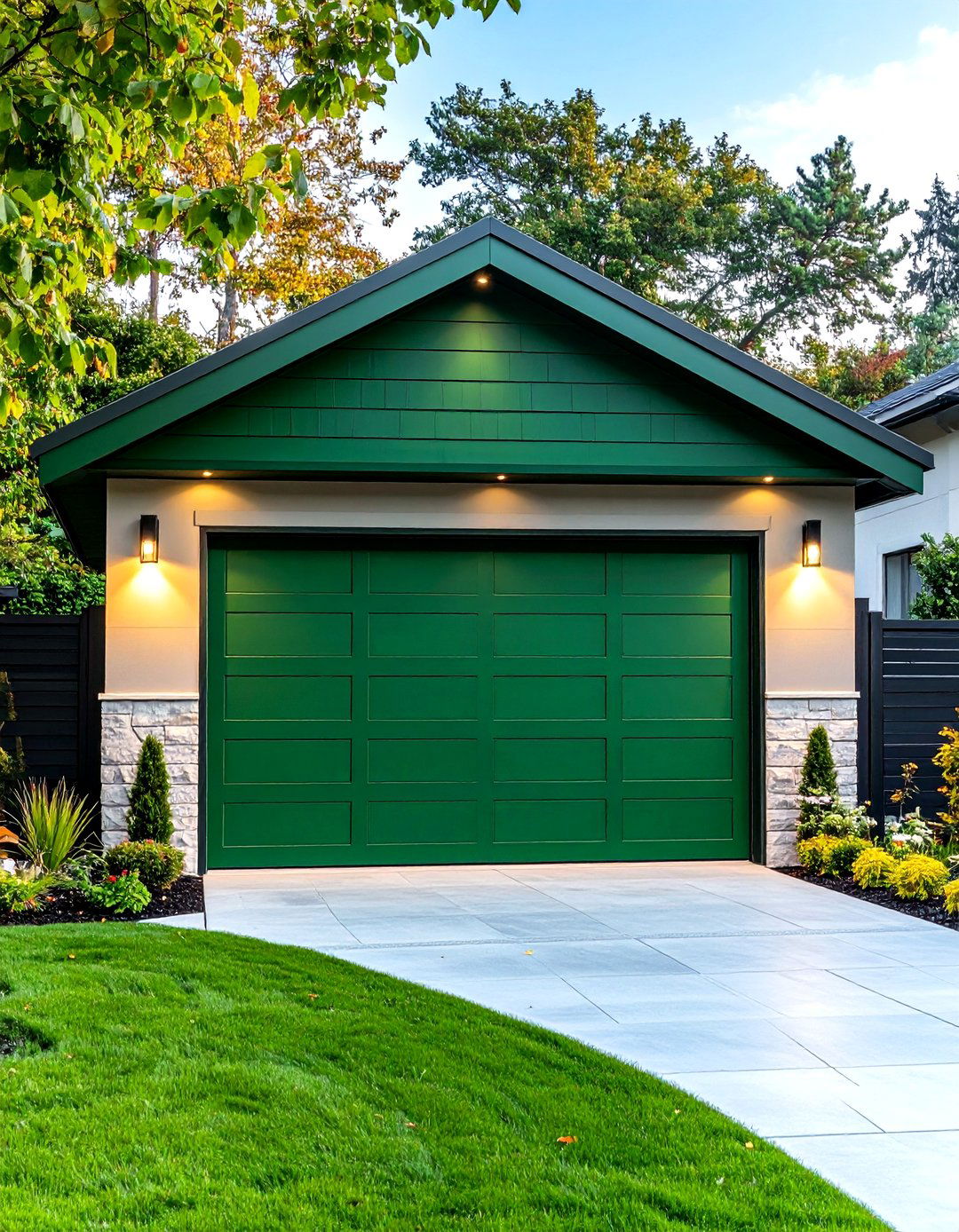
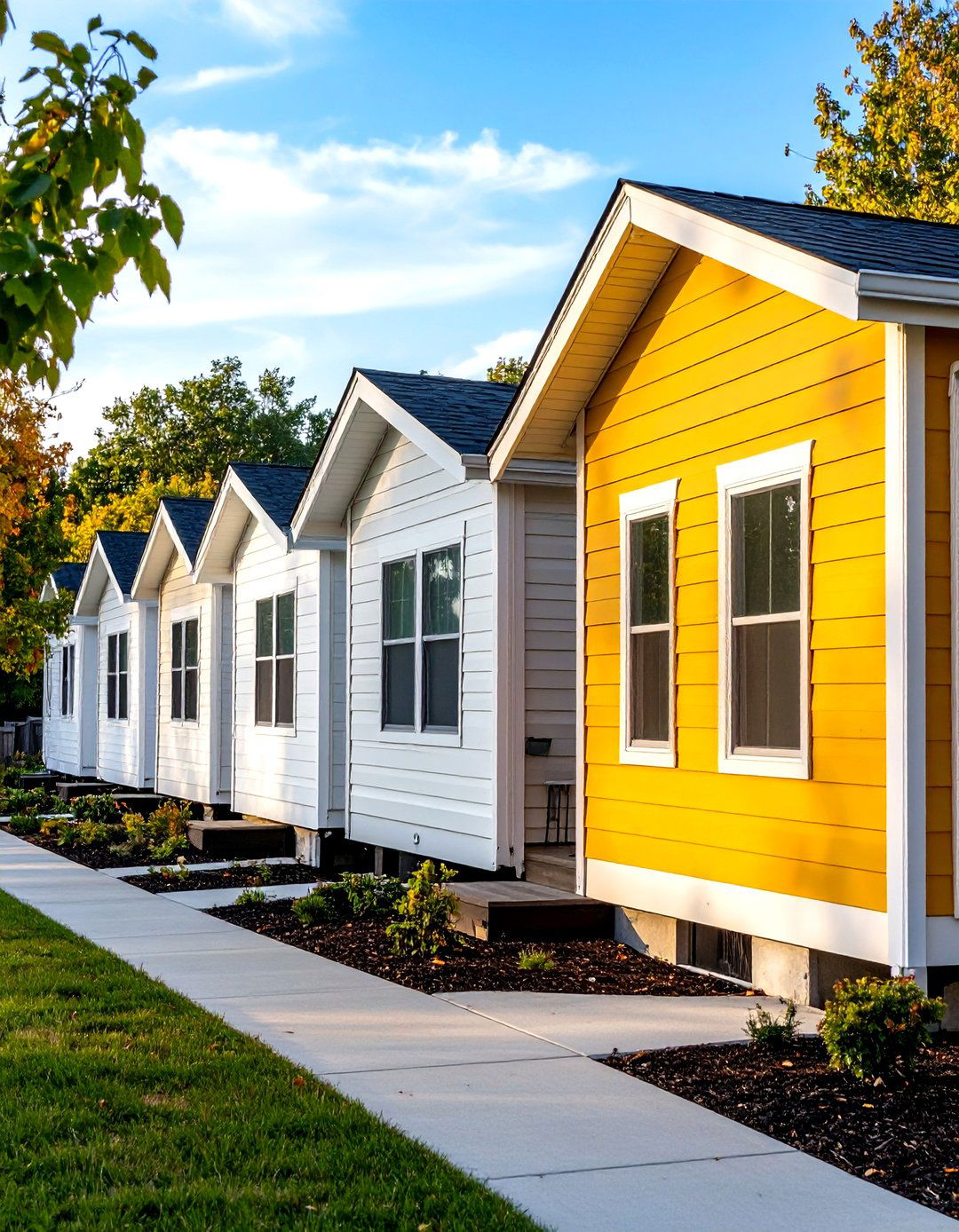
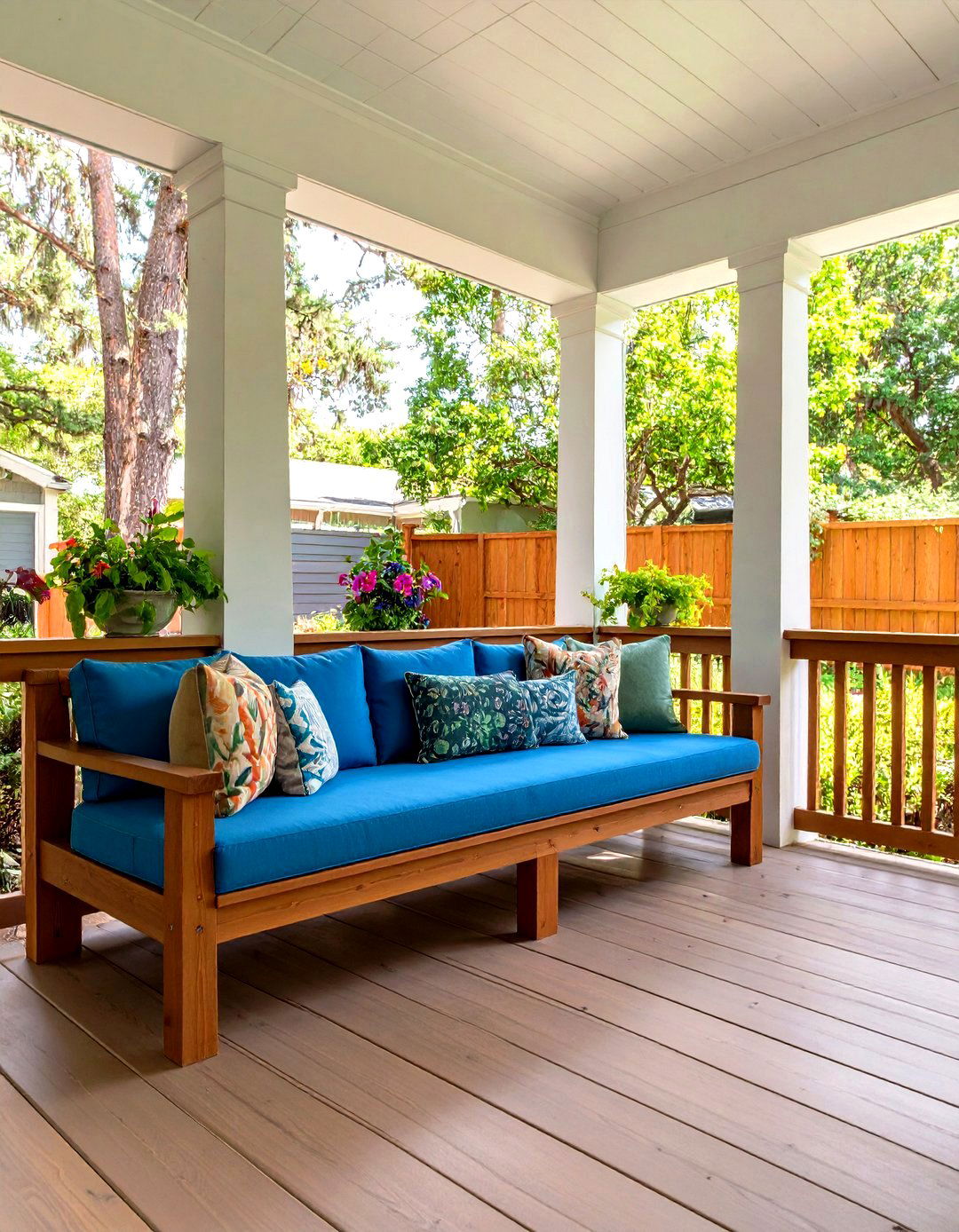
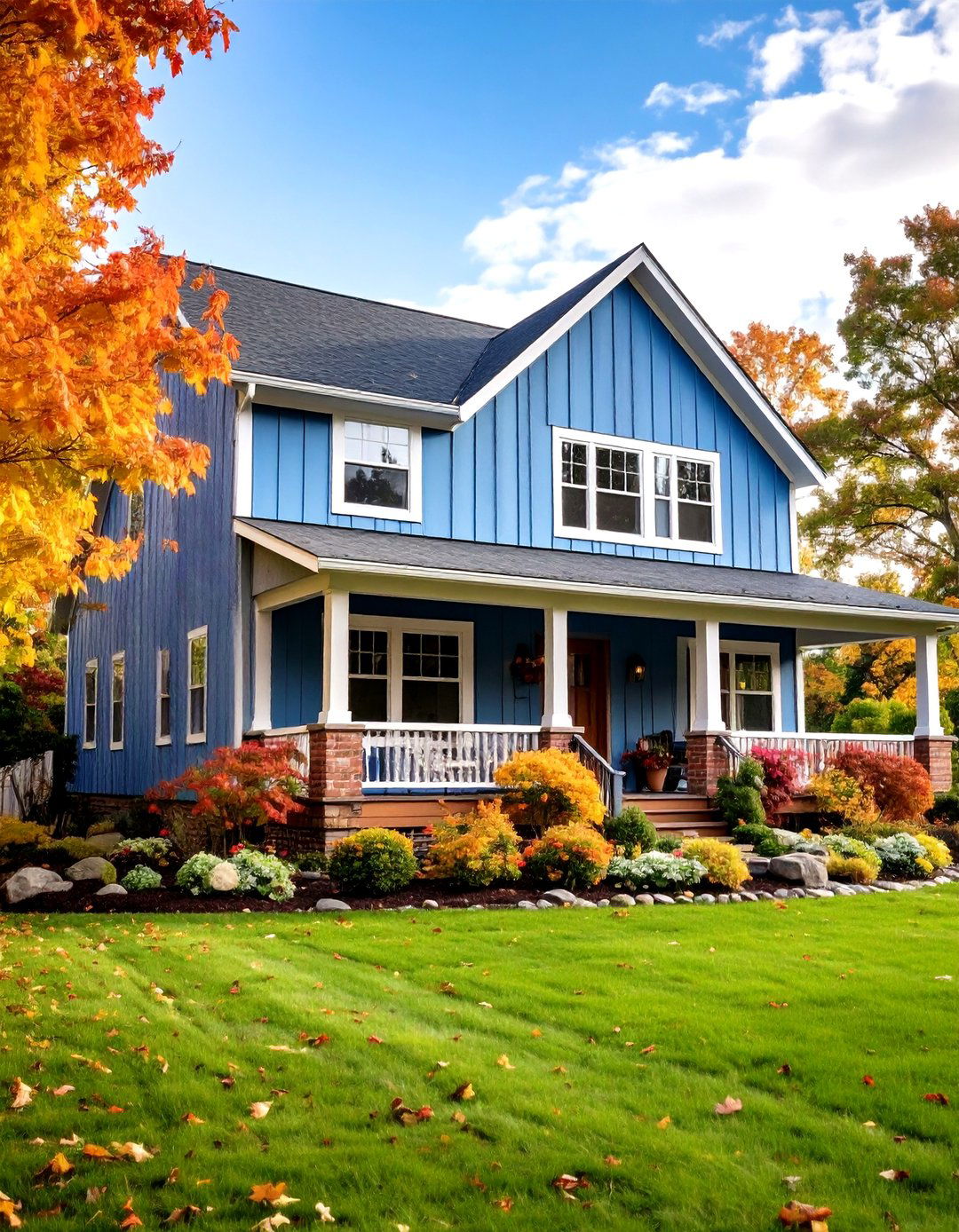
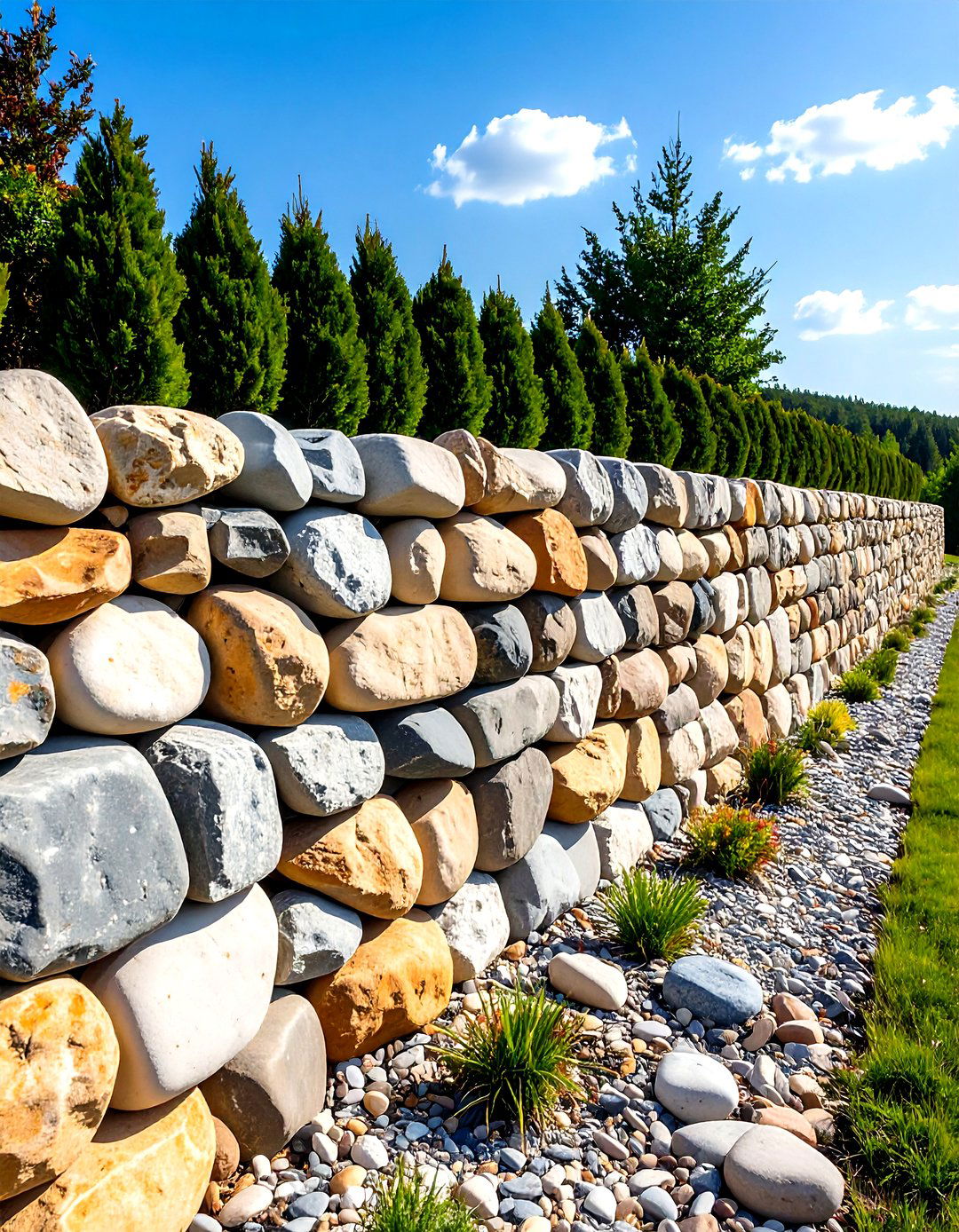
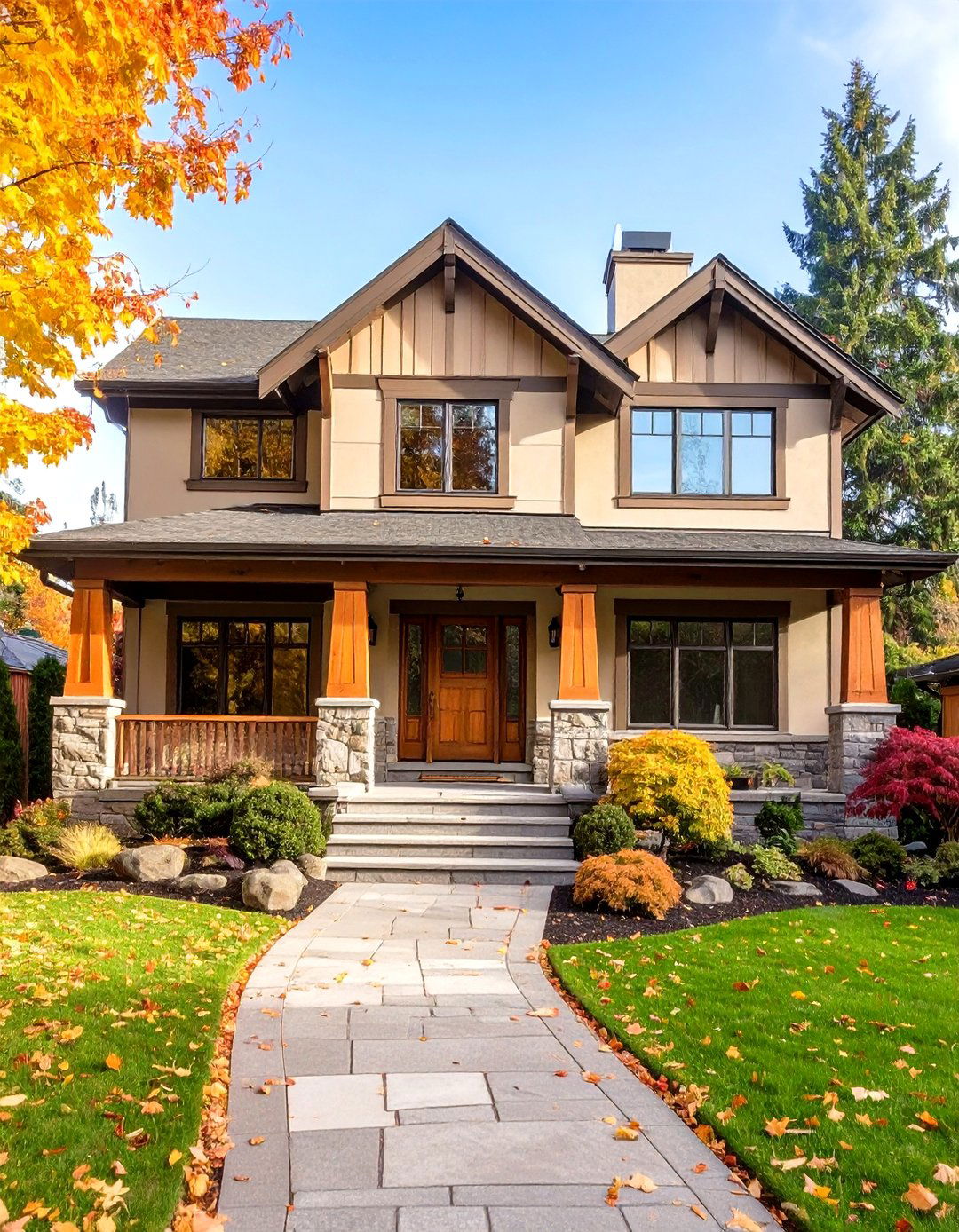
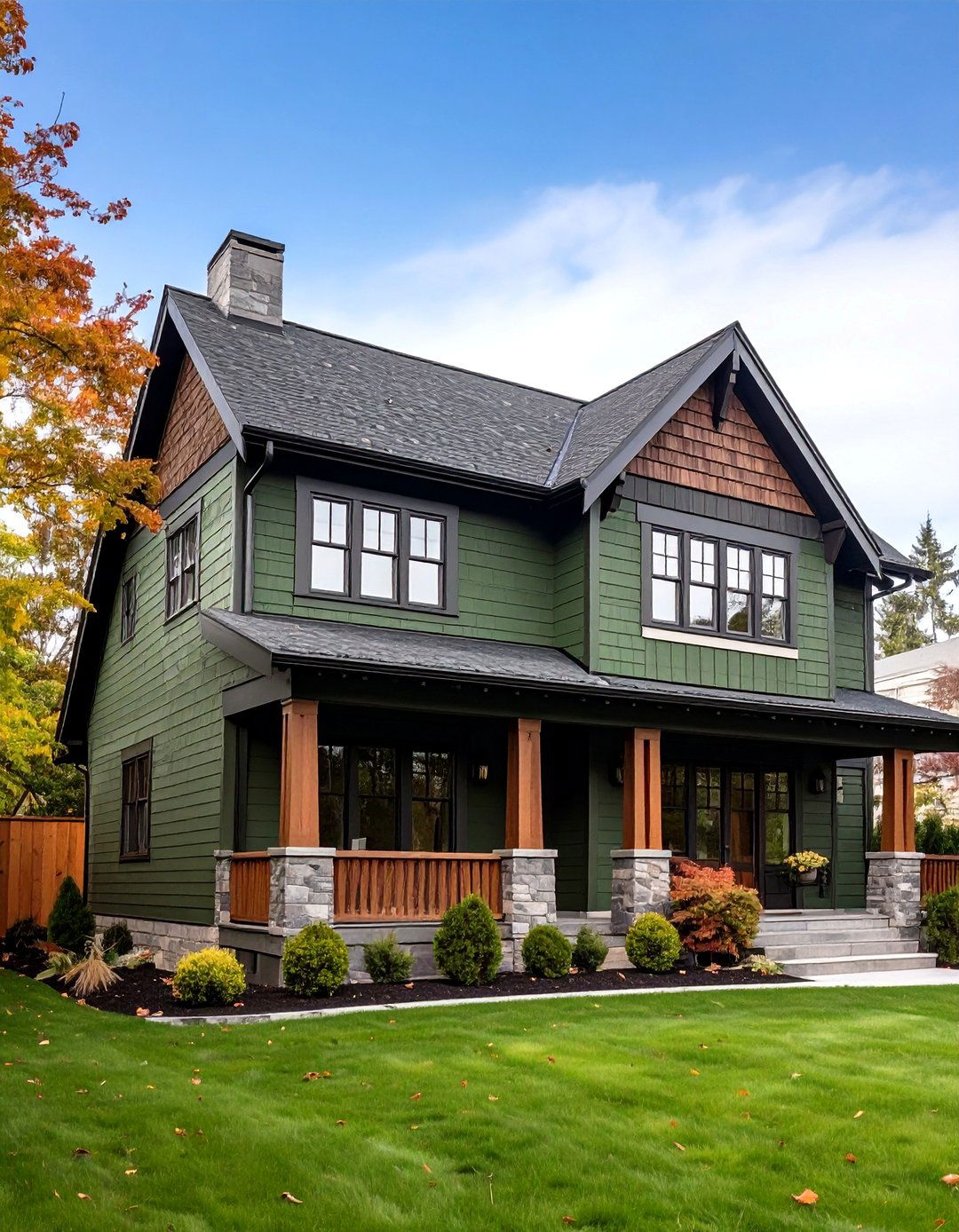
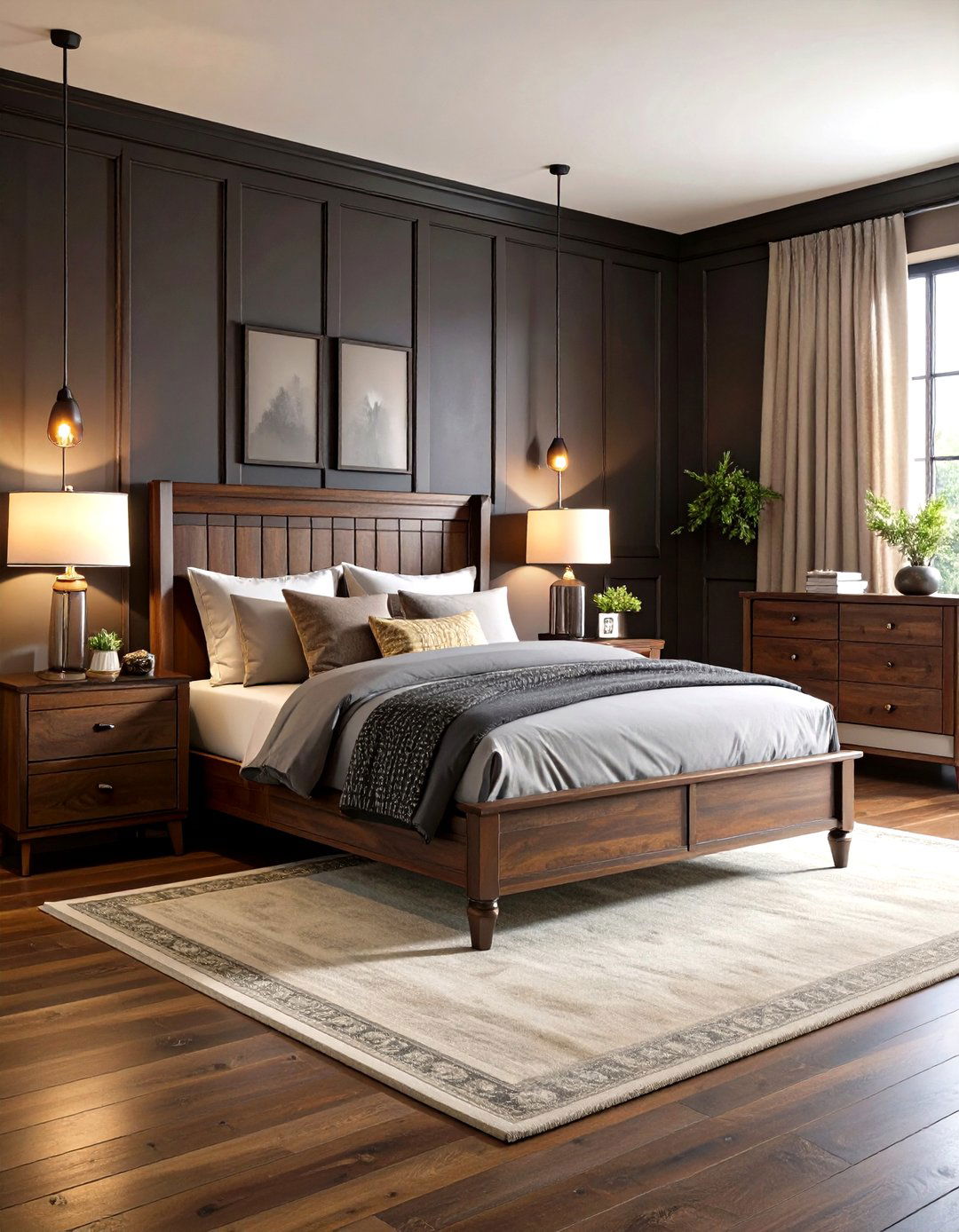
Leave a Reply